

Teaching Methods and Strategies: The Complete Guide
You’ve completed your coursework. Student teaching has ended. You’ve donned the cap and gown, crossed the stage, smiled with your diploma and went home to fill out application after application.
Suddenly you are standing in what will be your classroom for the next year and after the excitement of decorating it wears off and you begin lesson planning, you start to notice all of your lessons are executed the same way, just with different material. But that is what you know and what you’ve been taught, so you go with it.
After a while, your students are bored, and so are you. There must be something wrong because this isn’t what you envisioned teaching to be like. There is.
Figuring out the best ways you can deliver information to students can sometimes be even harder than what students go through in discovering how they learn best. The reason is because every single teacher needs a variety of different teaching methods in their theoretical teaching bag to pull from depending on the lesson, the students, and things as seemingly minute as the time the class is and the subject.
Using these different teaching methods, which are rooted in theory of different teaching styles, will not only help teachers reach their full potential, but more importantly engage, motivate and reach the students in their classes, whether in person or online.
Teaching Methods
Teaching methods, or methodology, is a narrower topic because it’s founded in theories and educational psychology. If you have a degree in teaching, you most likely have heard of names like Skinner, Vygotsky , Gardner, Piaget , and Bloom . If their names don’t ring a bell, you should definitely recognize their theories that have become teaching methods. The following are the most common teaching theories.
Behaviorism
Behaviorism is the theory that every learner is essentially a “clean slate” to start off and shaped by emotions. People react to stimuli, reactions as well as positive and negative reinforcement, the site states.
Learning Theories names the most popular theorists who ascribed to this theory were Ivan Pavlov, who many people may know with his experiments with dogs. He performed an experiment with dogs that when he rang a bell, the dogs responded to the stimuli; then he applied the idea to humans.
Other popular educational theorists who were part of behaviorism was B.F. Skinner and Albert Bandura .
Social Cognitive Theory
Social Cognitive Theory is typically spoken about at the early childhood level because it has to do with critical thinking with the biggest concept being the idea of play, according to Edwin Peel writing for Encyclopedia Britannica . Though Bandura and Lev Vygotsky also contributed to cognitive theory, according to Dr. Norman Herr with California State University , the most popular and first theorist of cognitivism is Piaget.
There are four stages to Piaget’s Theory of Cognitive Development that he created in 1918. Each stage correlates with a child’s development from infancy to their teenage years.
The first stage is called the Sensorimotor Stage which occurs from birth to 18 months. The reason this is considered cognitive development is because the brain is literally growing through exploration, like squeaking horns, discovering themselves in mirrors or spinning things that click on their floor mats or walkers; creating habits like sleeping with a certain blanket; having reflexes like rubbing their eyes when tired or thumb sucking; and beginning to decipher vocal tones.
The second stage, or the Preoperational Stage, occurs from ages 2 to 7 when toddlers begin to understand and correlate symbols around them, ask a lot of questions, and start forming sentences and conversations, but they haven’t developed perspective yet so empathy does not quite exist yet, the website states. This is the stage when children tend to blurt out honest statements, usually embarrassing their parents, because they don’t understand censoring themselves either.
From ages 7 to 11, children are beginning to problem solve, can have conversations about things they are interested in, are more aware of logic and develop empathy during the Concrete Operational Stage.
The final stage, called the Formal Operational Stage, though by definition ends at age 16, can continue beyond. It involves deeper thinking and abstract thoughts as well as questioning not only what things are but why the way they are is popular, the site states. Many times people entering new stages of their lives like high school, college, or even marriage go through elements of Piaget’s theory, which is why the strategies that come from this method are applicable across all levels of education.
The Multiple Intelligences Theory
The Multiple Intelligences Theory states that people don’t need to be smart in every single discipline to be considered intelligent on paper tests, but that people excel in various disciplines, making them exceptional.
Created in 1983, the former principal in the Scranton School District in Scranton, PA, created eight different intelligences, though since then two others have been debated of whether to be added but have not yet officially, according to the site.
The original eight are musical, spatial, linguistic, mathematical, kinesthetic, interpersonal, intrapersonal and naturalistic and most people have a predominant intelligence followed by others. For those who are musically-inclined either via instruments, vocals, has perfect pitch, can read sheet music or can easily create music has Musical Intelligence.
Being able to see something and rearrange it or imagine it differently is Spatial Intelligence, while being talented with language, writing or avid readers have Linguistic Intelligence. Kinesthetic Intelligence refers to understanding how the body works either anatomically or athletically and Naturalistic Intelligence is having an understanding of nature and elements of the ecosystem.
The final intelligences have to do with personal interactions. Intrapersonal Intelligence is a matter of knowing oneself, one’s limits, and their inner selves while Interpersonal Intelligence is knowing how to handle a variety of other people without conflict or knowing how to resolve it, the site states. There is still an elementary school in Scranton, PA named after their once-principal.
Constructivism
Constructivism is another theory created by Piaget which is used as a foundation for many other educational theories and strategies because constructivism is focused on how people learn. Piaget states in this theory that people learn from their experiences. They learn best through active learning , connect it to their prior knowledge and then digest this information their own way. This theory has created the ideas of student-centered learning in education versus teacher-centered learning.
Universal Design for Learning
The final method is the Universal Design for Learning which has redefined the educational community since its inception in the mid-1980s by David H. Rose. This theory focuses on how teachers need to design their curriculum for their students. This theory really gained traction in the United States in 2004 when it was presented at an international conference and he explained that this theory is based on neuroscience and how the brain processes information, perform tasks and get excited about education.
The theory, known as UDL, advocates for presenting information in multiple ways to enable a variety of learners to understand the information; presenting multiple assessments for students to show what they have learned; and learn and utilize a student’s own interests to motivate them to learn, the site states. This theory also discussed incorporating technology in the classroom and ways to educate students in the digital age.
Teaching Styles
From each of the educational theories, teachers extract and develop a plethora of different teaching styles, or strategies. Instructors must have a large and varied arsenal of strategies to use weekly and even daily in order to build rapport, keep students engaged and even keep instructors from getting bored with their own material. These can be applicable to all teaching levels, but adaptations must be made based on the student’s age and level of development.
Differentiated instruction is one of the most popular teaching strategies, which means that teachers adjust the curriculum for a lesson, unit or even entire term in a way that engages all learners in various ways, according to Chapter 2 of the book Instructional Process and Concepts in Theory and Practice by Celal Akdeniz . This means changing one’s teaching styles constantly to fit not only the material but more importantly, the students based on their learning styles.
Learning styles are the ways in which students learn best. The most popular types are visual, audio, kinesthetic and read/write , though others include global as another type of learner, according to Akdeniz . For some, they may seem self-explanatory. Visual learners learn best by watching the instruction or a demonstration; audio learners need to hear a lesson; kinesthetic learners learn by doing, or are hands-on learners; read/write learners to best by reading textbooks and writing notes; and global learners need material to be applied to their real lives, according to The Library of Congress .
There are many activities available to instructors that enable their students to find out what kind of learner they are. Typically students have a main style with a close runner-up, which enables them to learn best a certain way but they can also learn material in an additional way.
When an instructor knows their students and what types of learners are in their classroom, instructors are able to then differentiate their instruction and assignments to those learning types, according to Akdeniz and The Library of Congress. Learn more about different learning styles.
When teaching new material to any type of learner, is it important to utilize a strategy called scaffolding . Scaffolding is based on a student’s prior knowledge and building a lesson, unit or course from the most foundational pieces and with each step make the information more complicated, according to an article by Jerry Webster .
To scaffold well, a teacher must take a personal interest in their students to learn not only what their prior knowledge is but their strengths as well. This will enable an instructor to base new information around their strengths and use positive reinforcement when mistakes are made with the new material.
There is an unfortunate concept in teaching called “teach to the middle” where instructors target their lessons to the average ability of the students in their classroom, leaving slower students frustrated and confused, and above average students frustrated and bored. This often results in the lower- and higher-level students scoring poorly and a teacher with no idea why.
The remedy for this is a strategy called blended learning where differentiated instruction is occurring simultaneously in the classroom to target all learners, according to author and educator Juliana Finegan . In order to be successful at blended learning, teachers once again need to know their students, how they learn and their strengths and weaknesses, according to Finegan.
Blended learning can include combining several learning styles into one lesson like lecturing from a PowerPoint – not reading the information on the slides — that includes cartoons and music associations while the students have the print-outs. The lecture can include real-life examples and stories of what the instructor encountered and what the students may encounter. That example incorporates four learning styles and misses kinesthetic, but the activity afterwards can be solely kinesthetic.
A huge component of blended learning is technology. Technology enables students to set their own pace and access the resources they want and need based on their level of understanding, according to The Library of Congress . It can be used three different ways in education which include face-to-face, synchronously or asynchronously . Technology used with the student in the classroom where the teacher can answer questions while being in the student’s physical presence is known as face-to-face.
Synchronous learning is when students are learning information online and have a teacher live with them online at the same time, but through a live chat or video conferencing program, like Skype, or Zoom, according to The Library of Congress.
Finally, asynchronous learning is when students take a course or element of a course online, like a test or assignment, as it fits into their own schedule, but a teacher is not online with them at the time they are completing or submitting the work. Teachers are still accessible through asynchronous learning but typically via email or a scheduled chat meeting, states the Library of Congress.
The final strategy to be discussed actually incorporates a few teaching strategies, so it’s almost like blended teaching. It starts with a concept that has numerous labels such as student-centered learning, learner-centered pedagogy, and teacher-as-tutor but all mean that an instructor revolves lessons around the students and ensures that students take a participatory role in the learning process, known as active learning, according to the Learning Portal .
In this model, a teacher is just a facilitator, meaning that they have created the lesson as well as the structure for learning, but the students themselves become the teachers or create their own knowledge, the Learning Portal says. As this is occurring, the instructor is circulating the room working as a one-on-one resource, tutor or guide, according to author Sara Sanchez Alonso from Yale’s Center for Teaching and Learning. For this to work well and instructors be successful one-on-one and planning these lessons, it’s essential that they have taken the time to know their students’ history and prior knowledge, otherwise it can end up to be an exercise in futility, Alonso said.
Some activities teachers can use are by putting students in groups and assigning each student a role within the group, creating reading buddies or literature circles, making games out of the material with individual white boards, create different stations within the classroom for different skill levels or interest in a lesson or find ways to get students to get up out of their seats and moving, offers Fortheteachers.org .
There are so many different methodologies and strategies that go into becoming an effective instructor. A consistent theme throughout all of these is for a teacher to take the time to know their students because they care, not because they have to. When an instructor knows the stories behind the students, they are able to design lessons that are more fun, more meaningful, and more effective because they were designed with the students’ best interests in mind.
There are plenty of pre-made lessons, activities and tests available online and from textbook publishers that any teacher could use. But you need to decide if you want to be the original teacher who makes a significant impact on your students, or a pre-made teacher a student needs to get through.
Read Also: – Blended Learning Guide – Collaborative Learning Guide – Flipped Classroom Guide – Game Based Learning Guide – Gamification in Education Guide – Holistic Education Guide – Maker Education Guide – Personalized Learning Guide – Place-Based Education Guide – Project-Based Learning Guide – Scaffolding in Education Guide – Social-Emotional Learning Guide
Similar Posts:
- Discover Your Learning Style – Comprehensive Guide on Different Learning Styles
- 35 of the BEST Educational Apps for Teachers (Updated 2024)
- 15 Learning Theories in Education (A Complete Summary)
Leave a Comment Cancel reply
Save my name and email in this browser for the next time I comment.

Support our educational content for free when you buy through links on our site. Learn more
[2023] The Ultimate Guide to Teaching Methods and Strategies: Expert Advice for Classroom Success
- June 11, 2023
- Instructional Coaching

As educators and teachers, we understand that finding the right teaching methods and strategies is crucial for classroom success. With so many different options out there, it can be overwhelming to determine which approach is best. That's why our team at Teacher Strategies™ has compiled the ultimate guide to teaching methods and strategies, filled with expert advice and tips to help you find the best approach for your classroom.
Table of Contents
Introduction
The importance of teaching methods, lecture method, discussion method, demonstration method, cooperative learning method, inquiry-based method, project-based learning method, flipped classroom method, personalized education method, the pros and cons of different teaching methods, direct instruction, inquiry-based learning, cooperative learning, personalized learning, flipped classroom, interactive, self-discovery, instructional methods in education, quick tips and facts.
The success of any classroom largely depends on the effectiveness of the teaching methods and strategies employed by their teachers. Using outdated or ineffective methods can bore and disengage students, while innovative and engaging approaches can inspire learning and foster student success. The goal of this guide is to help you find the best teaching methods and strategies to suit your unique classroom and teaching style.
The right teaching method can make all the difference in student success. Effective teaching methods ensure that information is being delivered in a way that's engaging and meaningful. Not all students learn the same way, and using a variety of teaching methods can help ensure that every student is able to understand and retain information. Additionally, using innovative teaching methods shows students that you care about their learning and are willing to try new approaches to help them succeed.
Different Types of Teaching Methods and Strategies
Lecturing is a popular method of teaching that involves the teacher providing information to the students through a verbal presentation. This method is best suited for delivering large amounts of information in a relatively short amount of time, and it allows students to take notes and ask questions. However, lectures can be a passive form of learning for students and are not always the most engaging method.
The discussion method involves encouraging student participation through group discussions and debates. This method is excellent for developing critical thinking skills, encouraging student engagement, and promoting collaboration. However, it can be difficult to manage and may not be ideal for every subject.
The demonstration method involves teachers demonstrating how to complete a task or solve a problem. This method can be useful for subjects that require hands-on learning, such as science or art. However, it may not be effective for all students and may require more time for preparation.
Cooperative learning involves students working together in groups to achieve a common goal. This method promotes teamwork and collaboration, and can help to develop communication skills. However, it can be difficult to manage and may not work best with all students.
The inquiry-based method involves students exploring a topic or problem on their own, using critical thinking skills and problem-solving strategies. This method promotes self-directed learning and can be highly engaging for students. However, it requires a high level of preparation and may not be suitable for every subject or classroom.
Project-based learning involves students working on a long-term project to achieve a goal or solve a problem. This method promotes creativity, critical thinking, and teamwork. However, it can be difficult to manage and may require more time for preparation.
The flipped classroom method involves students learning material at home through a pre-recorded lecture, while the in-class time is spent on hands-on group activities and projects. This method allows for more personalized learning and fosters student engagement. However, it requires a high level of preparation and may not work best with all students.
Personalized education involves tailoring the learning experience to the individual student's needs, strengths, and interests. This method can be highly effective for engaging students and encouraging critical thinking. However, it requires a high level of preparation and may not be suitable for every subject or classroom.
No method is perfect, and understanding the pros and cons of each approach is essential. Here are a few pros and cons of each method:
- Pros: Fast delivery of information, cost-effective, and easy to implement.
- Cons: Passive form of learning, not suitable for all subjects, and requires the right environment to be successful.
- Pros: Encourages critical thinking, promotes collaboration, and engaging for students.
- Cons: Difficult to manage, can be hard to keep students focused, and not suitable for all subjects.
- Pros: Useful for hands-on learning, can be visual and engaging.
- Cons: Limited in effectiveness, may be costly, and time-consuming to prepare.
- Pros: Promotes teamwork, communication, and critical thinking skills.
- Cons: Can be difficult to manage, may be uncomfortable for some students, and not suitable for all subjects.
- Pros: Promotes critical thinking and creativity, fosters engagement and self-directed learning.
- Cons: High level of preparation, may not work with all students, and can be difficult to manage.
- Pros: Promotes critical thinking, creativity, and teamwork.
- Cons: Can be challenging to manage, may be time-consuming to prepare, and not suitable for all subjects.
- Pros: Allows for personalized learning, fosters student engagement, and promotes critical thinking and collaboration.
- Cons: Requires a high level of preparation, not suitable for all students, and can be difficult to manage.
- Pros: Tailored to individual needs and interests, fosters student engagement and critical thinking.
- Cons: Requires a high level of preparation, not suitable for all students, and can be challenging to manage.
What are the 5 Teaching Approaches?
There are five main teaching approaches that educators can use in the classroom. Understanding each approach can help you determine which is best for your classroom:
Direct instruction is a teacher-centered approach that involves lecture, demonstrations, and other activities designed to deliver large amounts of information to students quickly. This approach is best suited for subjects that require a lot of factual information and can be less engaging for students.
Inquiry-based learning is a student-centered approach that promotes self-directed learning through questioning and investigation. This method promotes critical thinking, problem-solving, and creativity.
Cooperative learning involves students working together in groups to achieve a common goal. This approach promotes teamwork, collaboration, and communication skills.
Personalized learning tailors the learning experience to the individual student's needs, strengths, and interests. This approach can be highly engaging for students and encourages critical thinking and self-directed learning.
The flipped classroom approach involves reversing the traditional classroom model, with students learning material at home through a pre-recorded lecture, while the in-class time is spent on hands-on group activities and projects. This approach allows for more personalized learning, fosters student engagement, and promotes critical thinking and collaboration.
The Four Types of Instructional Methods
Instructional methods are the specific techniques or strategies used to deliver information to students. There are four main types of instructional methods:
Expository instructional methods involve lecturing, reading, or demonstrating to impart information to students. This method is best suited for subjects that require a lot of factual information.
Interactive instructional methods involve activities that require students to be actively engaged in the learning process. This method promotes critical thinking and problem-solving.
Mastery instructional methods involve teaching a skill or concept until the student has mastered it. This approach requires targeted instruction and assessment to ensure that students have a strong foundation before moving on to the next topic.
Self-discovery instructional methods involve encouraging students to explore a topic or problem on their own, using critical thinking skills and problem-solving strategies. This method promotes self-directed learning and can be highly engaging for students.
Instructional methods are essential in education, as they define how information is delivered to students. Different methods work best for different subjects, and some may be more effective than others depending on the teacher, curriculum, and goals of the lesson. As teachers, it's essential to approach instruction with an open mind, experimenting with new methods and techniques as needed.
- Understand your students' learning styles to determine which teaching methods will work best.
- Not all teaching methods work for every student or every subject – experimenting with different approaches can help you discover what works best for your classroom.
- Use a combination of teaching methods to keep students engaged and interested.
- Technology can be an effective tool for engaging students and delivering information in new and innovative ways.
What are the different types of teaching methods?
The different types of teaching methods include: lecture, discussion, demonstration, cooperative learning, inquiry-based learning, project-based learning, flipped classroom, and personalized education.
What are the 5 teaching approaches?
The 5 teaching approaches are: direct instruction, inquiry-based learning, cooperative learning, personalized learning, and flipped classroom.
What are the four types of instructional methods?
The four types of instructional methods are expository, interactive, mastery, and self-discovery.
What are some teaching methods and strategies?
Effective teaching methods and strategies include using technology, personalized learning, inquiry-based learning, cooperative learning, and project-based learning.
What are instructional methods in education?
Instructional methods in education are the teaching techniques and strategies used to deliver information to students.
By understanding the different teaching methods and strategies available, you can develop a tailored approach that best suits your classroom and students. Experiment with different methods and techniques, and use technology to your advantage. With the right approach, you can inspire learning and foster student success. As a recommendation, we suggest starting with a mix of cooperative learning, project-based learning, and personalized education. Surveyed teachers have claimed these approaches enhance student engagement, collaboration, and critical thinking. Remember to always approach teaching methods with an open mind, and be willing to try new approaches to discover what works best for your students.
[1] https://learn.org/articles/Edutopia_An_Online_Community_for_Teachers_and_Students.html [2] [3] https://www.knewton.com/ [4] https://www.epa.gov/students [5] https://arapahoe.extension.colostate.edu/wp-content/uploads/sites/10/2020/05/Denver-STEM-resources-for-parents-and-teachers_.pdf [6] https://www.edutopia.org/technology-integration-guide-importance
Marti is a seasoned educator and strategist with a passion for fostering inclusive learning environments and empowering students through tailored educational experiences. With her roots as a university tutor—a position she landed during her undergraduate years—Marti has always been driven by the joy of facilitating others' learning journeys.
Holding a Bachelor's degree in Communication alongside a degree in Social Work, she has mastered the art of empathetic communication, enabling her to connect with students on a profound level. Marti’s unique educational background allows her to incorporate holistic approaches into her teaching, addressing not just the academic, but also the emotional and social needs of her students.
Throughout her career, Marti has developed and implemented innovative teaching strategies that cater to diverse learning styles, believing firmly that education should be accessible and engaging for all. Her work on the Teacher Strategies site encapsulates her extensive experience and dedication to education, offering readers insights into effective teaching methods, classroom management techniques, and strategies for fostering inclusive and supportive learning environments.
As an advocate for lifelong learning, Marti continuously seeks to expand her knowledge and skills, ensuring her teaching methods are both evidence-based and cutting edge. Whether through her blog articles on Teacher Strategies or her direct engagement with students, Marti remains committed to enhancing educational outcomes and inspiring the next generation of learners and educators alike.
Related Posts
What is core teaching [2024] ✅.
- March 20, 2024
Two Core Teaching Strategies You Must Try for Success in the Classroom [2024] ✅
What are the 4 a’s teaching strategies [2024] ✅.
- March 15, 2024
Leave a Reply Cancel Reply
Your email address will not be published. Required fields are marked *
Add Comment *
Save my name, email, and website in this browser for the next time I comment.
Post Comment
Trending now
- Our Mission
5 Highly Effective Teaching Practices

I remember how, as a new teacher, I would attend a professional development and feel inundated with new strategies. (I wanted to get back to the classroom and try them all!) After the magic of that day wore off, I reflected on the many strategies and would often think, "Lots of great stuff, but I'm not sure it's worth the time it would take to implement it all."
We teachers are always looking to innovate, so, yes, it's essential that we try new things to add to our pedagogical bag of tricks. But it's important to focus on purpose and intentionality -- and not on quantity. So what really matters more than "always trying something new" is the reason behind why we do what we do.
What Research Says
This leads me to educational researcher John Hattie, who wrote Visible Learning for Teachers: Maximizing Impact on Learning . Through his research, one of his goals is to aid teachers in seeing and better understanding learning through the eyes of their students.
Hattie has spent more than 15 years researching the influences on achievement of K-12 children. His findings linked student outcomes to several highly effective classroom practices. Here I'd like to highlight five of those practices:
1. Teacher Clarity
When a teacher begins a new unit of study or project with students, she clarifies the purpose and learning goals, and provides explicit criteria on how students can be successful. It's ideal to also present models or examples to students so they can see what the end product looks like.
2. Classroom Discussion
Teachers need to frequently step offstage and facilitate entire class discussion. This allows students to learn from each other. It's also a great opportunity for teachers to formatively assess (through observation) how well students are grasping new content and concepts.
3. Feedback
How do learners know they are moving forward without steady, consistent feedback? They often won't. Along with individual feedback (written or verbal), teachers need to provide whole-group feedback on patterns they see in the collective class' growth and areas of need. Students also need to be given opportunities to provide feedback to the teacher so that she can adjust the learning process, materials, and instruction accordingly.
4. Formative Assessments
In order to provide students with effective and accurate feedback, teachers need to assess frequently and routinely where students are in relation to the unit of study's learning goals or end product (summative assessment). Hattie recommends that teachers spend the same amount of time on formative evaluation as they do on summative assessment.
5. Metacognitive Strategies
Students are given opportunities to plan and organize, monitor their own work, direct their own learning, and to self-reflect along the way. When we provide students with time and space to be aware of their own knowledge and their own thinking, student ownership increases. And research shows that metacognition can be taught .
Collaborating with Colleagues
Great teachers are earnest learners. Spend some time with a colleague, or two or three, and talk about what each of these research-based, best classroom practices looks like in the classroom. Discuss each one in the context of your unique learning environment: who your students are, what they need, what they already know, etc.
How do you already bring these five classroom practices alive in your classroom? Please share in the comments section below.
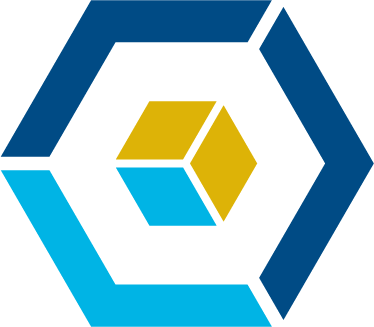
Center for Educational Effectiveness

Effective Teaching
Reflecting on teaching effectiveness ( read full series ), what is it.
Effective teaching meets the learning needs of each individual student. As instructors, we aim to help all of our students learn and succeed. Basing our teaching on the principles of how students learn, we are best equipped to support diverse populations and varied class sizes. A number of sources can provide evidence of effectiveness and help us reflect on our teaching competence, including self-evaluation, evaluation by other faculty members, and feedback collected from our students.
Research on teaching and learning demonstrates that clear course structure and teaching clarity increases student motivation, persistence, and improves performance and grades, with particular impact on first-generation and low-SES students (Blaich & Wise, 2014; Pascarella & Blaich, 2013; Wang et al., 2015) . 1 Clear and organized instruction impacts academic performance through three mechanisms: (1) student belief that faculty are interested in teaching and student development; (2) student academic engagement; and (3) student motivation (Roksa et al, 2017).
Teaching Strategies
Create an engaging & inclusive environment through varied instructional strategies and resources to promote high levels of student understanding.
Design & organize the course by applying in-depth knowledge of teaching pedagogies to interconnect effective instruction, learning goals, and assessment within and across disciplinary content areas.
Plan instruction & learning activities by flexibly utilizing a repertoire of instructional practices to differentiate instruction as informed by ongoing and multiple assessments.
Assess learning with a wide range of assessments strategically, systematically, and flexibly throughout instruction to identify student learning needs and guide ongoing adjustments in instruction that maximize student learning.
Reflect on teaching by analyzing and integrating information from a wide range of sources to impact teacher effectiveness and student learning.
CLICK FOR HANDOUT
Students say ...
- “I grow more in classes where I am able to practice and my instructor provides comments that guide and improve my understanding.”
- “Being in a class that was structured around group projects made me feel more engaged in the course material, which definitely contributed to my learning and success in the class.”
- What do you want learning to look like in your classroom? To ensure students are learning, how will you actively engage them, differentiate instruction, and provide opportunities for guided practice and meaningful feedback?
- What data will you gather to determine the effectiveness of your teaching?
- 1 List of all references in the complete JITT Guide.
High Impact Tutoring Built By Math Experts
Personalized standards-aligned one-on-one math tutoring for schools and districts
Free ready-to-use math resources
Hundreds of free math resources created by experienced math teachers to save time, build engagement and accelerate growth

The Most Effective Teaching Strategies To Use In Your School: Evidence Based And Proven To Work
Anantha Anilkumar
Gather a room of teachers together and they will give you as many teaching strategies as there are topics in the K-12 curriculum. This article introduces the 13 most important teaching strategies you should be using – the ones that have real impact on learning outcomes and the ones that we use every week with the 7,000 students we teach in our one-on-one math interventions. We also include the 6 learning strategies that your students should know about in order to enable them to reach their learning goals.
Teaching and learning strategies taken from the best of global education research
One of the greatest advances that has been made in the last 5 years in the education sector in the U.S. and globally is the increasing influence of large scale research and evidence informing what we know about how children learn, and consequently, how we can better teach them.
Whether that’s the emphasis on evidence-based interventions under ESSA, the growing ResearchEd movement, or even just the vibrant #edutwitter community, many more teachers now are taking their professional development into their own hands.
More teachers than ever are aware of John Hattie’s “Index of Teaching and Learning Strategies,” and wary of implementing new instructional strategies unthinkingly; no one wants to be stung by another “learning styles” waste of effort.
But even when you know there may be better and more efficient ways to develop your students’ understanding, choosing which of these teaching strategies to start with can be a challenge. This article aims to guide you through this.
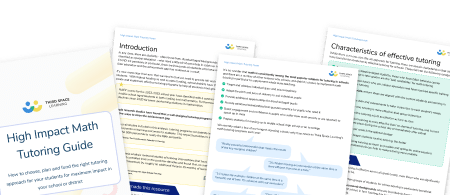
13 Teaching Strategies Poster
Use these 13 tried and tested teaching strategies as the basis for staff meetings. Creates professional development opportunities for staff, and help them maximise student progress.
What are teaching strategies?
Teaching strategies are methods and techniques that a teacher will use to support their students through the learning process; a teacher will choose the teaching strategy most suitable to the topic being studied, the level of expertise of the learner, and the stage in their learning journey.
In one lesson, a teacher may use many different teaching strategies with different end goals. The most effective teaching strategies are those proven to work over large scale trials. There is no requirement for a teaching strategy to be innovative, although, of course, some of them are.
13 teaching strategies for elementary and middle school
These are the 13 most important teaching strategies that you and all the teachers in your school should have in your teaching toolkit to make the most out of class time.
No one is suggesting you will use them in every lesson, but an awareness of what they are and their potential impact is essential to improve your practice. These can be implemented in the classroom and used as math intervention strategies .
And of course if you’re a school leader, or responsible for professional development in your school, knowing what’s current and evidence-backed is key so that you can make an informed choice the next time somebody suggests implementing a new or innovative teaching technique.
1. Know your students and develop their respect
This may sound basic, but the basis of all good teaching is an understanding of your students and their learning needs. Aligned to this is the respect between you and your students. The relationship between teacher and student is a vital element of the learning experience. Memorizing names, taking time to get to know a new class from the first day, and understanding what motivates them and their barriers to learning – student centered learning is an often overlooked teaching strategy!
All of our one-to-one tutors are made aware before working with a student of any special educational needs, and will take the time to get to know each student throughout the lessons by asking about their hobbies and interests or the kinds of things they’ve been learning in school.
Read more: How To Support A Child With Autism In The Classroom
In this way, whenever possible, a tutor can personalize a lesson or a teaching technique as appropriate to the child with a real-world example.
2. Appropriate use of summative and formative assessments
The first stage here is making sure you know the difference between formative and summative assessment . It may sound obvious, but you’d be surprised how many teachers don’t use each appropriately.
To cover them quickly:
Summative assessment refers to an assessment that takes place after a block of work has been completed, whether this is a unit or a school year. They are best thought of as assessments of learning.
Formative assessments are those that take place day-to-day and are used to gauge students’ understanding of a topic – they are assessments for learning. Formative assessment is often used in a diagnostic capacity to help us identify whether students are struggling with a topic in the moment. This can then guide and adapt our instruction during the lesson to better meet children’s needs.
Diagnosis of children’s gaps using formative assessments
We advocate the use of these kinds of diagnostic assessments to identify a child’s misconceptions. Usually, this is best achieved through a set of multiple choice questions.
As well as the correct answer, we can include multiple distractors – answers that are incorrect based on a misconception a child may have, e.g. around multiplying. If a child chooses an incorrect answer, then we can easily identify exactly where their thinking has gone wrong.
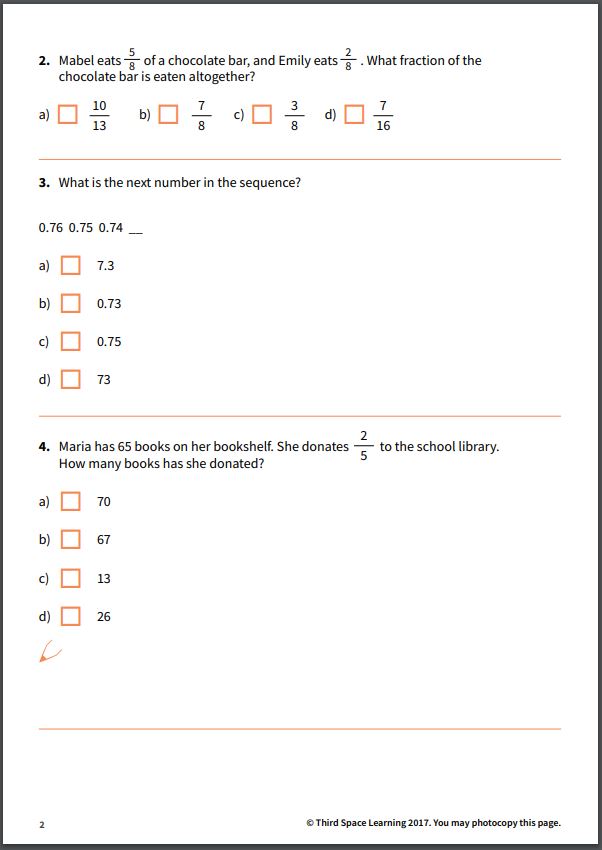
For students using our elementary math tutoring , we use a pre and post-assessment at the start and end of every intervention lesson for progress monitoring . This is responsive, meaning questions are based on answers to an earlier question. This helps us more clearly identify not just misconceptions and weaknesses, but also where a child’s strengths lie and what needs less time spent on.
3. Teach the vocabulary
With the new focus in the curriculum on knowledge organizers, there’s no excuse for children being without the relevant topic vocabulary. They need the words to be able to create the thoughts and the sentences to confidently speak about a given topic.
This is why our tutors will always pre-teach important math vocabulary at the start of a lesson with their students, explaining any new terms and checking for understanding of previously covered ones.
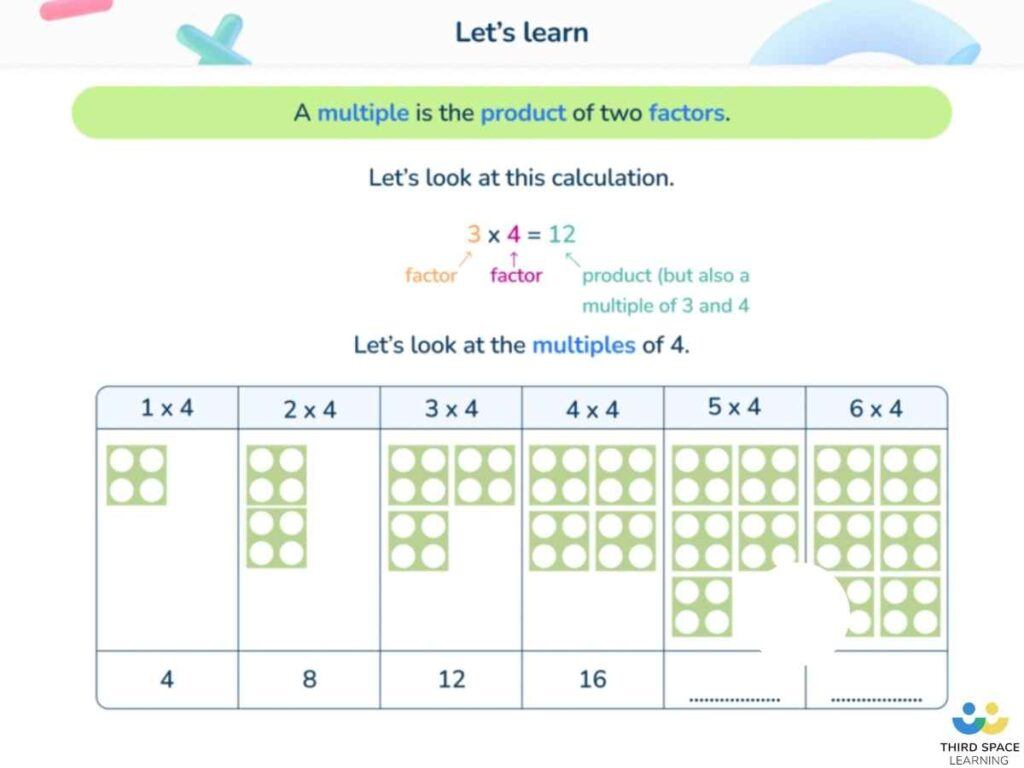
4. Explicit instruction
Also known as direct instruction, this teaching strategy is teacher-led and focuses on frequent questioning and guided practice to help students learn a topic.The backbone of explicit instruction is the use of the worked example in an Example-Problem Pair . This involves demonstrating a worked example in its entirety in silence alongside a problem that students will then attempt.
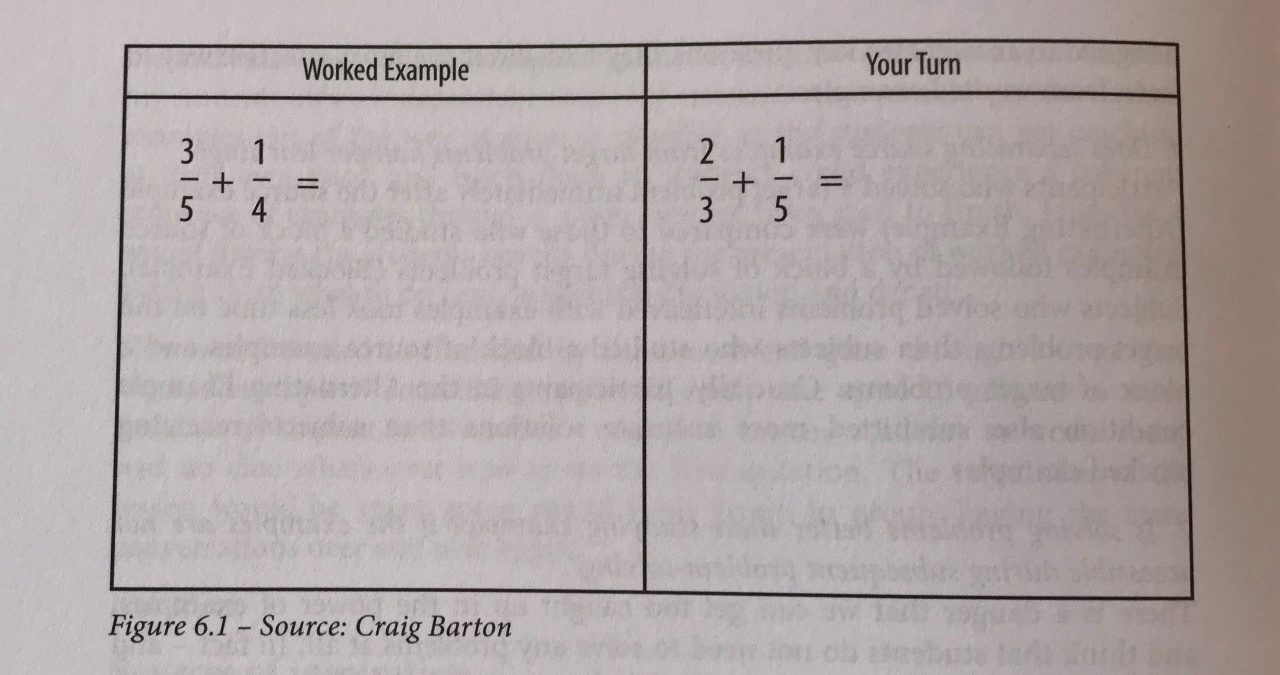
Silence is important in order to ensure students’ attention is not split between the example and the spoken explanation, making it more likely that both will be more fully absorbed and retained.
A student on a Third Space Learning’s online math intervention program will need to have all other distractions eliminated so they can focus entirely on the information on their screen and what the tutor is asking them to do; tutors can present a worked example in real time in a learning environment without any visual or auditory disruptions.
5. Effective questioning techniques
While we are all aware of the importance of questioning as a tool to gauge students’ understanding of a topic, there are definite techniques to improve the efficacy of your questioning in the classroom .
Questions such as “Are you sure?” and “How do you know?” encourage students to engage in grade-level-appropriate critical-thinking to establish how confident they are in an answer and why , while others such as “Is there another way?” help to highlight where multiple methods to derive a solution may exist.
Our tutors encourage students to verbalize their reasoning and ask questions to ensure students have really got to grips with the topic at-hand: “How do you know that answer is right?”, “Can you tell me how else you could work it out?” or “What do you need to do first to answer this question?” are all questions that come up frequently during our lessons!
Goal-free problems are another questioning strategy worth considering using in your classes.
6. Deliberate practice
One of the most effective ways of introducing new concepts to a class, Deliberate Practice involves breaking learning down into a series of sub skills, each of which is deliberately practiced in turn.
The 5 steps involved in deliberate practice are:
- Isolate the skill
- Develop the skill
- Assess the skill
- Final performance
- Retrieval practice later
As an example, when teaching long multiplication , this is how we might use deliberate practice:
- identify ( isolate ) each specific sub skill involved in multiplication using the standard algorithm;
- practice ( develop ) each of these one by one;
- Assess students’ use of these skills before moving on;
- have students put them all together for a final performance – in this case a full multiplication problem using the standard algorithm;
- return to this topic in later weeks and months to check that students still retain those skills.
At the beginning of every Third Space Learning intervention session, students are given a warm-up question related to a previously covered topic; this enables tutors to check that they have retained the relevant skills (and where they have not, to return to the topic).
7. Differentiation
Differentiated instruction in elementary school can be difficult to achieve – poor differentiation strategies risk widening the gap we’re attempting to close.
But there are plenty of impactful differentiation strategies ; techniques such as interleaving and phased learning, as well as the use of math manipulatives and formative assessment, are among those proven to have a beneficial impact on students when properly employed.
As we’ve already discussed, formative assessment is a significant aspect of how Third Space’s tutors gauge student progress. But we also make use of several other differentiation strategies during lessons, such as spaced practice, interleaving and a mixture of direct instruction and inquiry-based learning.
8. Reinforcing effort/providing recognition
Helping students make a link between putting effort into a task and receiving recognition is an important step in developing a classroom environment that fosters active learning.
Encouraging students to put more effort into activities only goes so far without something to provide them with the motivation to do so. Praise and recognition are motivators that students are already familiar with; shifting them from being correct to giving full effort can be highly effective.
Third Space Learning’s tutors establish an effort-focused environment right from the first session, encouraging students to talk through their answers and celebrate their mistakes as learning opportunities, ensuring they approach each intervention as another chance to try.
Since we began our intervention programs, our tutors have celebrated and rewarded student effort by awarding over 32 MILLION Effort Points!
9. Metacognition
Literally “thinking about thinking,” metacognition has been recognised as one of the most effective, lowest cost teaching strategies there is, with students making an average of seven months’ additional progress.
Metacognition in elementary schools often incorporates some of the other effective teaching strategies, such as questioning in the classroom – “How do you know?” not only asks students to justify their solutions, but has them thinking about their own thought processes for deriving that solution.
Teaching students how to learn math , plan, monitor and self-evaluate their own learning also improves student motivation and encourages them to work harder in lessons, tying into another teaching strategy. Furthermore, it develops their communication and literacy skills.
All our tutors are trained to use a variety of metacognitive strategies as standard during sessions, and we provide students with numerous moments for self-reflection both during and after sessions.
10. Personalized learning
It might sound obvious, but students are more likely to engage with learning when it is more targeted to them and appeals to their interests! This may be difficult to achieve early on – especially with large classes of 30 students – but as familiarity and rapport builds throughout the year, it should become easier to make activities and even questions more personalized to individual children.
At Third Space, we’ve built our online interventions on personalization; all our students undertake an Initial Diagnostic Assessment when they begin their programs, which identifies their strengths and weaknesses in math and allows us to design a lesson plan that helps them make progress where they need it.
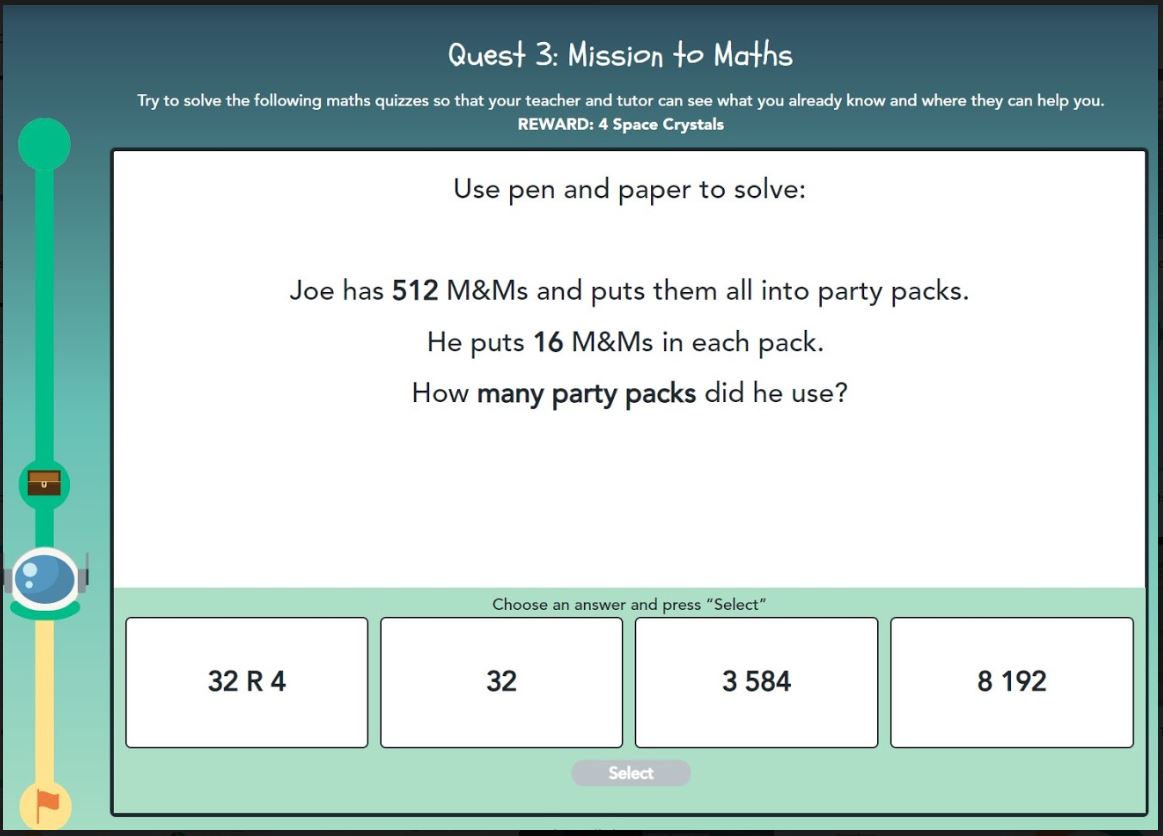
Our tutors then build on this by adding a personal touch to those lessons, incorporating students’ interests into lessons with ease thanks to our online platform.
11. Collaborative learning
Also referred to as “cooperative learning,” the idea of having students work in groups for certain classroom activities won’t be new to most teachers. A popular technique to promote this collaboration is through think-pair-share.
However, the impact of group work can vary widely, and to make it most effective, teachers should focus on well-structured tasks that promote talk and interaction between students.
The concept of “competitive” collaborative learning (where groups of students compete against one another) has been shown to have some impact, but caution is advised in case students focus more on the competition rather than the learning.
12. Explicitly teach thinking skills & problem solving techniques
Mathematical problem solving techniques don’t always come naturally to students; while metacognitive strategies such as those mentioned above make it more likely that students will be able to apply critical thinking to a problem, there is no set way to ensure that this will happen.
Research into the topic suggests that context-agnostic deployment of problem solving techniques only occurs once students have secure domain knowledge and the opportunity to practice.
Without these, students often fall into the trap of attributing importance to the so-called “surface features” of a problem, which we naturally discount as irrelevant to the actual math involved.
That said, explicit teaching of thinking skills is still of considerable importance; once domain knowledge has been (relatively) secured, teaching students how to recognize and focus on the “deep structure” of problems enables them to apply their knowledge more effectively.
Try using several “Same Surface Different Deep” (SSDD) problems in lessons – where the surface features of the questions are the same, but the deep structure varies (e.g. division, multiplication, addition, etc.).
These questions eliminate any confusion regarding surface features and thus allow students to focus on differentiating the deep structures.
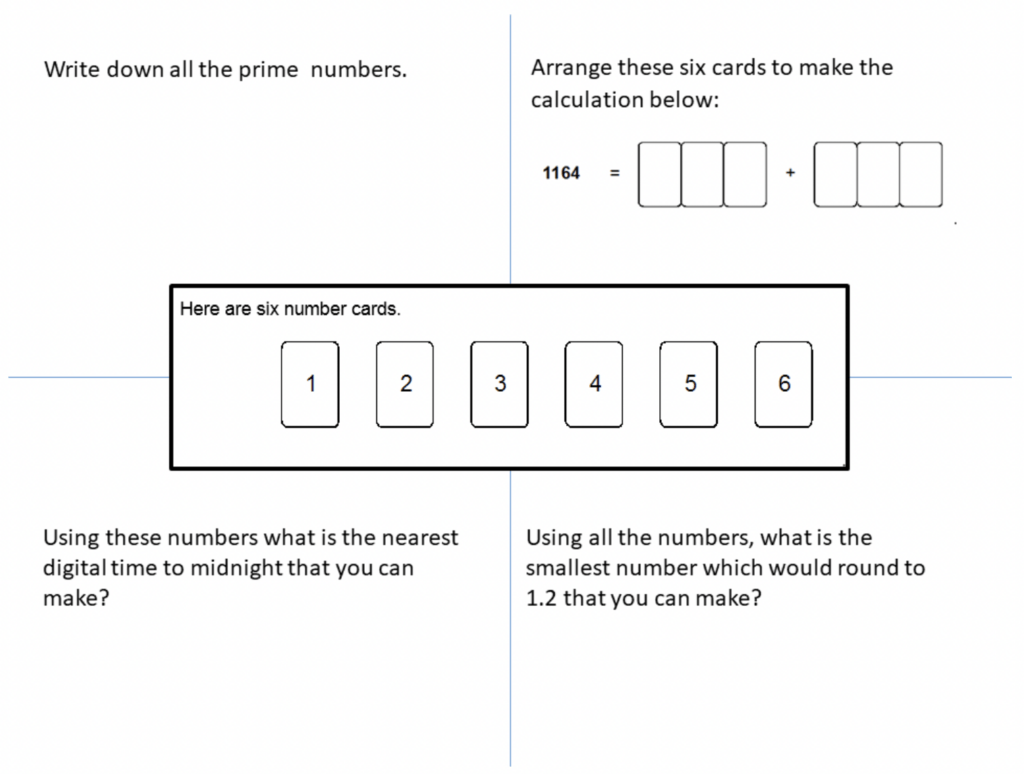
13. Modeling and scaffolding
You may already be familiar with the “I do, We do, You do” method of scaffolding, but it’s worth taking some time to dive into why it’s as effective as it is.
Modeling is one of the most important factors in ensuring student learning of a particular topic, but it is most impactful when it can introduce new concepts without increasing students’ cognitive load – hence the “I, We, You” approach.
By building from teacher-led, to joint construction, to independent working, we create a structure that presents learning as less of a step-change and more of an actual process. It also allows us greater flexibility; more time can be spent on one stage, e.g. joint construction if it becomes necessary.
Gradual scaffolding with support slides
All Third Space Learning intervention lessons make use of this kind of gradual scaffolding method, and our online platform lends even more flexibility to the scaffolding structure – tutors can pull from a bank of “support slides” if spending more time on a concept or process is necessary.
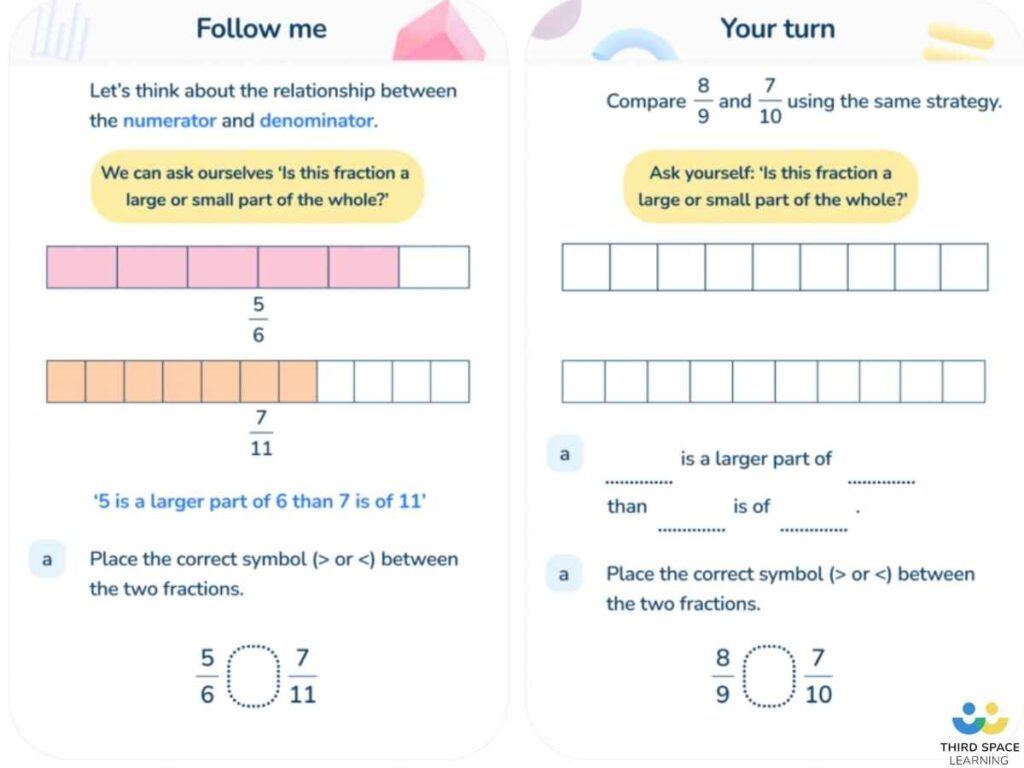
Read more: Teaching tips for teacher observations
Other teaching strategies to consider
The teaching strategies above form the basis of our one-to-one lessons, but some other teaching practices you’ll need to consider in your own classroom include:
Use of education technology
Knowing when and where to bring technology into the classroom is a delicate balancing act. While children tend to react well to technology-based lessons, there’s always the risk that they focus on the tech over the learning.
Read more: How To Do An Education Technology Audit In Your School
Behavior management
Effective classroom management is its own topic, but there’s no doubt that a well-behaved class (not necessarily a perfectly-behaved one) is far more likely to engage with lessons.
Inquiry-based learning
While triggering the curiosity of your students for a topic is the necessary first step in inquiry-based learning, presenting them with the opportunity to research and report on the topic is where learning really occurs.
How you manage class discussions, e.g. ‘Think, pair, share’
Somewhat related to behavior management, class or group discussions are most beneficial when they have a clear, well-established structure to them. Students should not only feel they have the opportunity to share their thoughts, but understand that others’ thoughts also have value.
Feedback process and understanding
The single most impactful teaching strategy when used correctly, feedback (whether from the teacher or another source, such as a peer) needs to be specific, encouraging, and actionable – students need to be able to understand where they could improve and how.
Read more: Why My School Banned Marking
Growth Mindset
Separate from praise and rewarding effort, developing a growth mindset can be a very valuable tool in developing students’ resilience and fostering a more positive attitude towards both math specifically and learning in general.
Read more: How To Get Growth Mindset Right In Primary Schools
- Quality First Teaching Strategies Checklist
- What is a spiral curriculum?
- Introduction to Cognitive Load
- Teaching Bottom Set Math
- Primary School Teachers’ Guide to Learning and Memory
- What Is Variation Theory ?
- Dyscalculia in Schools: A Guide To Identifying And Supporting Students With “Math Dyslexia ”
- ADHD in the Classroom
6 learning strategies
Last, but not least, central to any good teaching practice is explicitly teaching learners of all ages about learning strategies. These are the 6 learning strategies we think every student should be familiar with by the end of elementary school.
1. Spaced practice
Ensuring that learned material is revisited at regular intervals instead of all at once much later on, when more of it is likely to be forgotten. For older students, study calendars can be of immense help leading up to state-wide or end of year exams.
2. Retrieval practice
Retrieval is the process of recalling information purely from memory, without the aid of learning materials. Effective retrieval practice helps embed information more thoroughly in our minds, since we no longer need context to recall it.
3. Elaboration
Tied into questioning in the classroom, elaboration puts the onus on students to do more than “just” recalling information. The use of open-ended questions such as “How did I get that answer?” help students to make connections between the things they’ve learned rather than seeing them as several unrelated facts.
4. Interleaving
A wealth of research is now available that suggests the benefits of interleaving – mixing practice of different skills with one another – in helping students better identify the necessary math strategies for problem solving . Interleaving with connected topics (e.g. division and multiplication) amplifies this effect.
5. Concrete examples
As math educators, the Concrete Representational Abstract Approach is embedded into the way we teach. Within our online tutoring , we have many different ways of explaining a topic and as an extension, we may ask students to come up with their own concrete examples for concepts, based on the examples we’ve used in explaining the concept to them.
6. Dual coding
Combining words and visuals in teaching materials. This isn’t referring to speech (as we established earlier), but having students create some kind of visual aid (e.g. a sketch, a diagram) to accompany written text can help them reinforce the concept in their brain in two different ways, making it easier to recall. Anyone who’s created slides for their students will be familiar with the challenge of imparting information through words and pictures.
- Hattie’s index of teaching & learning strategies and their effect size
- Teaching in Effective Primary Schools: Research into Pedagogy and Children’s Learning (Siram, Taggart et. al) published by UCL IOE Press.
- 9 Tutoring strategies to boost learning
- Tier 2 math intervention strategies to accelerate learning
Do you have students who need extra support in math? Give your students more opportunities to consolidate learning and practice skills through personalized math tutoring with their own dedicated online math tutor. Each student receives differentiated instruction designed to close their individual learning gaps, and scaffolded learning ensures every student learns at the right pace. Lessons are aligned with your state’s standards and assessments, plus you’ll receive regular reports every step of the way. Personalized one-on-one math tutoring programs are available for: – 2nd grade tutoring – 3rd grade tutoring – 4th grade tutoring – 5th grade tutoring – 6th grade tutoring – 7th grade tutoring – 8th grade tutoring Why not learn more about how it works ?
The content in this article was originally written by Anantha Anilkumar at Third Space Learning and has since been revised and adapted for US schools by elementary math teacher Katie Keeton.
Related articles
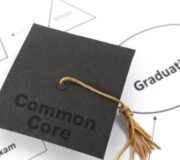
Common Core Math Explained: 8 Common Core Math Examples To Use In The Classroom

What Is A Spiral Curriculum: A Teacher’s Guide to What, How And When To Implement

What Is Metacognition And Why Does It Matter For Education?

Learning And Memory In The Classroom: What Teachers Should Know (Especially After The Summer)
Ultimate Guide to Problem Solving Techniques [FREE]
Are you trying to build problem solving and reasoning skills in the classroom?
Here are 9 ready-to-go printable problem solving techniques that all your students should know, including challenges, short explanations and questioning prompts.
Privacy Overview
- Math for Kids
- Parenting Resources
- ELA for Kids
- Teaching Resources

How to Teach Number Formation in 5 Easy Steps
13 Best Resources for Math Videos for Kids: Math Made Fun
How to Teach Skip Counting to Kids in 9 Easy Steps
10 Best Math Intervention Strategies for Struggling Students
How to Teach Division to Kids in 11 Easy Steps
How to Cope With Test Anxiety in 12 Easy Ways
Developmental Milestones for 4 Year Olds: The Ultimate Guide
Simple & Stress-Free After School Schedule for Kids of All Ages
When Do Kids Start Preschool: Age & Readiness Skills
Kindergarten Readiness Checklist: A Guide for Parents
How to Teach Letter Formtaion to Kids in 9 Easy Steps
15 Best Literacy Activities for Preschoolers in 2024
12 Best Poems About Teachers Who Change Lives
6 Effective Ways to Improve Writing Skills
40 Four Letter Words That Start With A
60 Fun Animal Facts for Kids
12 best behavior management techniques for the classroom.
13 Best Online Teaching Tips for Teachers
How to Teach Kids to Write in 9 Easy Steps
13 Challenges for Teachers and How to Address Them
12 Best Teaching Methods That Every Educator Should Know
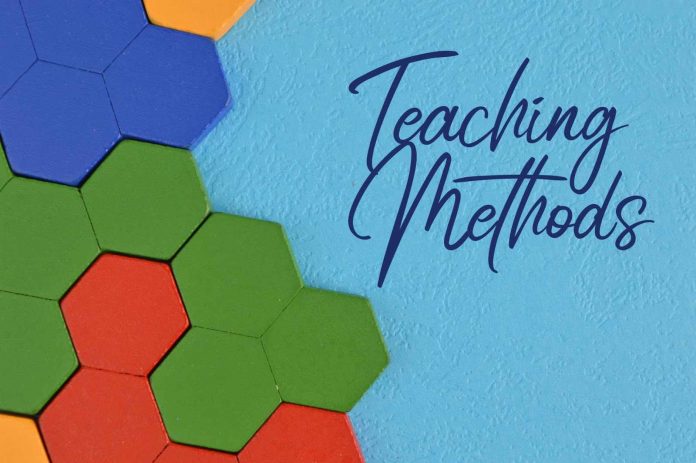
1. Game-based Learning
2. student-centered approaches, 3. teacher-centered learning, 4. project-based learning, 5. social emotional learning, 6. flipped classroom model, 7. collaborative learning strategies, 8. inquiry-based learning, 9. problem-based learning, 10. personalized learning.
Throughout history, teaching methods have evolved alongside societal changes and knowledge advancements. Initially, knowledge was transmitted orally in ancient civilizations, then formal schools emerged in classical societies like Greece and Rome. The Renaissance fostered individual learning and inquiry, paving the way for modern education.
SplashLearn: Most Comprehensive Learning Program for PreK-5

SplashLearn inspires lifelong curiosity with its game-based PreK-5 learning program loved by over 40 million children. With over 4,000 fun games and activities, it’s the perfect balance of learning and play for your little one.
Today, in an era of technological progress and global diversity, classrooms reflect a mix of cultures, languages, and ideologies. A one-size-fits-all teaching approach is inadequate for students’ diverse backgrounds and learning styles. Contemporary education demands varied teaching methods tailored to each student’s unique needs, ensuring effective, engaging, and relevant learning.
In this blog, we will delve deep into some of the best teaching methods educators can explore and implement , ensuring a comprehensive and inclusive approach to learning for all students.
Experience the future of learning with an innovative game-based approach and transform how your students engage with education!
What are Teaching Methods?
Teaching methods are specific techniques educators employ to deliver knowledge or skills, such as lectures, discussions, or hands-on activities.
Difference Between Teaching Methods and Teaching Strategies:
Teaching Methods: The actual techniques used, like group discussions or lectures.
Teaching Strategies: The overarching plans or approaches guiding how content is taught.
3 Importance of Teaching Methods
The right types of teaching methods are crucial in education. A recent study emphasized the value of active learning, where students aren’t just passive listeners but active participants. This aligns with Vygotsky’s 1978 concept of the ‘zone of proximal development,’ highlighting the space where learners, with guidance, can achieve beyond their independent capabilities.
Here’s why teaching methodologies matter:
- Enhancing Engagement: Active approaches to teaching capture students’ attention and foster a deeper connection with the subject matter. When students are actively engaged, they are more likely to internalize and reflect upon the content.
- Catering to Diverse Learning Needs: Every student has a unique learning style and pace. By employing a variety of methods of teaching, educators can ensure that they address all students’ diverse needs and preferences, making learning more inclusive.
- Improved Retention: The right approaches to teaching don’t just impart knowledge; they make it stick. Educators can enhance understanding and retention of content by catering to different learning styles and actively involving students.
List of 12 Best Teaching Methods to Explore

In the diverse world of education, various teaching methods stand out for their effectiveness and adaptability. Dive into these standout approaches that are shaping modern classrooms and enhancing student learning experiences .
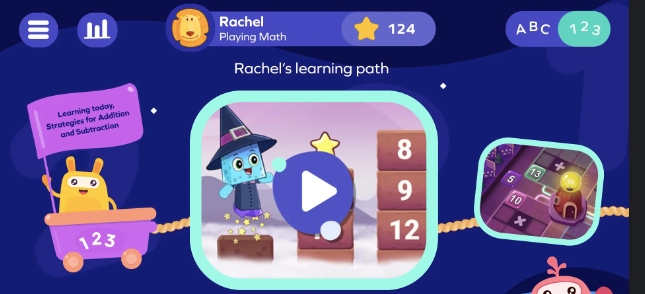
Best for: Kids of all ages
Game-based learning is an innovative teaching method that integrates games into the curriculum. Rather than traditional teaching techniques, it uses the mechanics of games to engage students, making the learning process more interactive and enjoyable. This method taps into the natural love for play, turning educational concepts into fun challenges.
Advantage: Engages students, makes learning fun, and improves retention.
Disadvantages: Increased screen time and might not be suitable for all topics.
Example: SplashLearn is a prime example of game-based learning in action. It offers a plethora of interactive math and reading games tailored for preK-grade 5 kids. By transforming complex concepts into engaging challenges, SplashLearn makes learning enjoyable and ensures deeper understanding and retention, showcasing the effectiveness of game-based teaching methods.
Ready to make learning an adventure? Get started with SplashLearn and watch your students thrive with game-based learning!
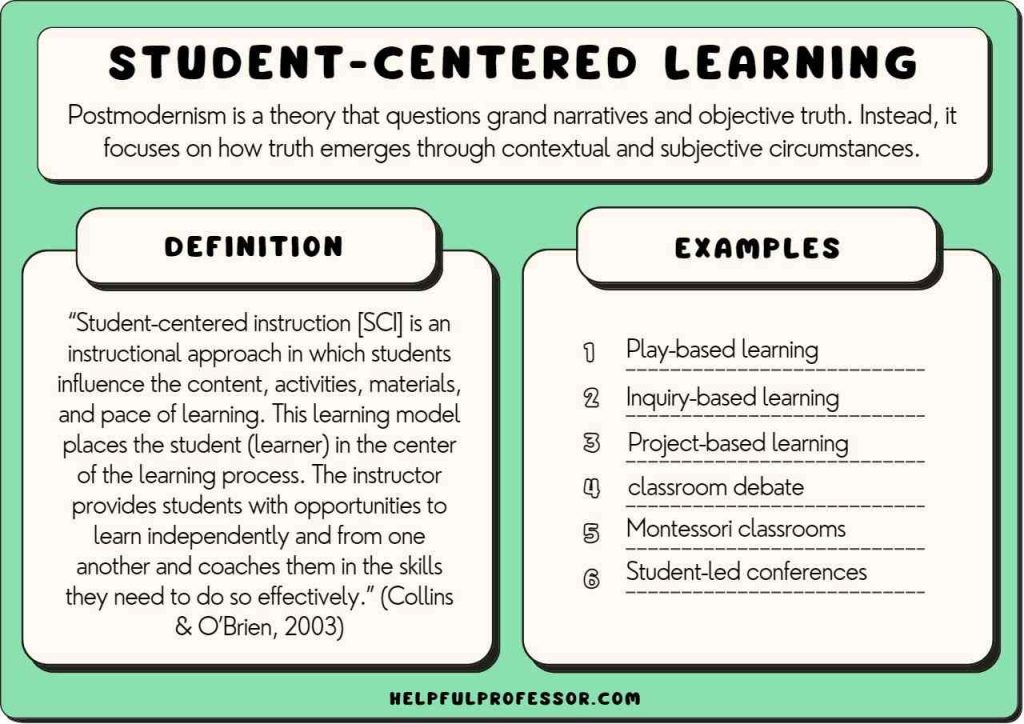
Best for: Middle School and High School students (ages 12-18)
Student-centered approaches shift the focus from the teacher to the student. In these teaching approaches, students play an active role in their learning journey, with educators acting as facilitators. The curriculum is often tailored to students’ interests and needs, promoting autonomy, self-direction, and a deeper connection to the content.
Advantage: Encourages critical thinking , fosters independence, and caters to individual learning needs.
Disadvantages: Can be challenging to manage in larger classrooms and might require more preparation time.
Example: Implementing group projects where students choose their topics and presentation methods.
Best For: All age groups, but especially prevalent in traditional classrooms.
Teacher-centered learning is one of the classic ways of teaching where the educator is the central figure. In this approach, the teacher is the primary source of information, guiding the flow of lessons, while students primarily listen and absorb knowledge. It’s a structured method that ensures consistency in content delivery.
Advantage: Structured and consistent, ensuring all students receive the same content.
Disadvantages: Might not cater to diverse learning styles and can limit student engagement.
Example: A lecture where the teacher presents a topic, and students take notes, with limited interaction.
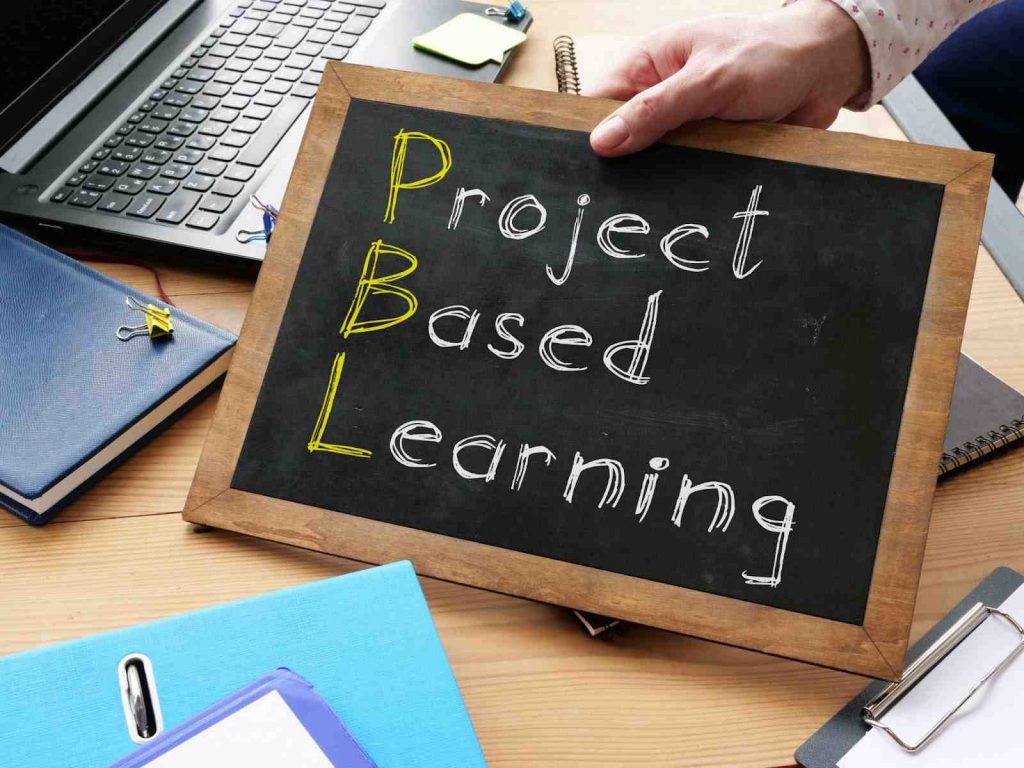
Best for: Middle School, High School, and College students (ages 12-22)
Project-Based Learning (PBL) is an education methodology where students learn by actively engaging in real-world and personally meaningful projects. Instead of traditional instruction, students are posed with a question or challenge and then seek out solutions through research, collaboration, and creativity.
Advantage: Encourages deep understanding, fosters collaboration, and allows students to apply knowledge in practical scenarios.
Disadvantages: Requires careful planning and can be time-consuming.
Example: Students working on a project to design a sustainable city, incorporating concepts from science, math, and social studies.

Best for: All age groups, with a particular emphasis on Elementary and Middle School students (ages 6-14)
Social Emotional Learning (SEL) focuses on teaching students about emotions, relationships, and responsible decision-making. It’s not just a teaching style but a holistic approach that integrates emotional and social competencies into the curriculum.
Advantage: Enhances emotional intelligence , improves interpersonal skills, and fosters a positive classroom environment .
Disadvantages: Can be challenging to integrate into academic subjects and requires consistent practice.
Example: Classroom activities that involve role-playing to understand and manage emotions or group discussions about empathy and understanding.
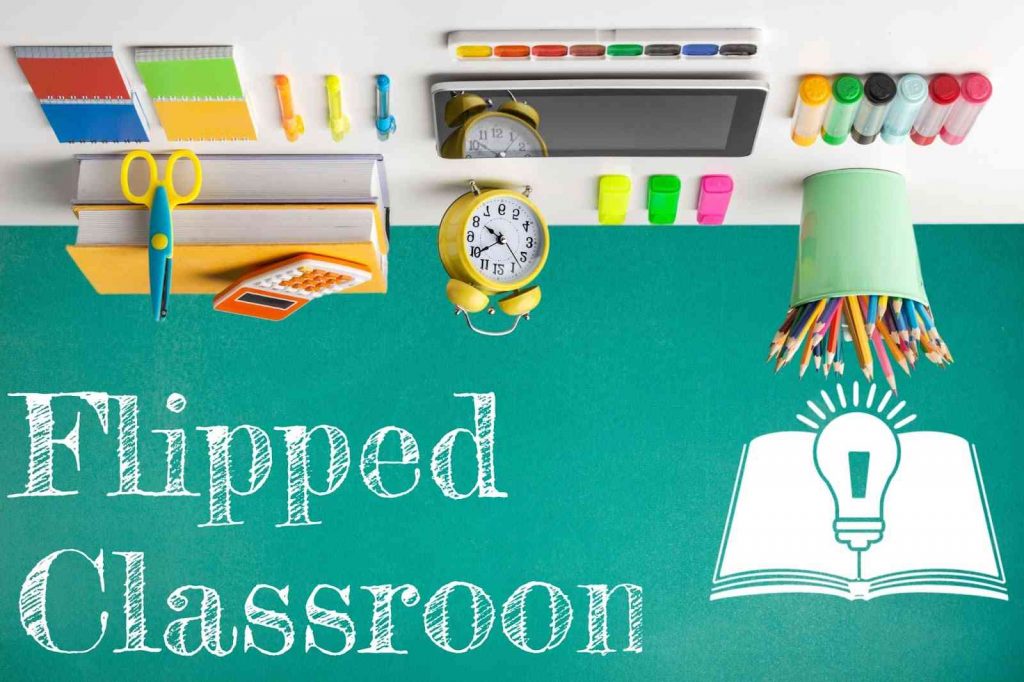
Best for: High School and College students (ages 15-22)
The Flipped Classroom Model is a modern teaching method where traditional homework and lectures are reversed. Students first explore new topics at home through videos or readings, and then classroom time is dedicated to discussions, exercises, and projects that enhance understanding.
Advantage: Maximizes classroom interaction, caters to self-paced learning, and allows for deeper exploration of topics during class time.
Disadvantages: Relies heavily on students’ discipline to study at home and requires access to technology.
Example: Students watching a video lecture on a historical event at home and then participating in a group discussion or simulation activity in class.
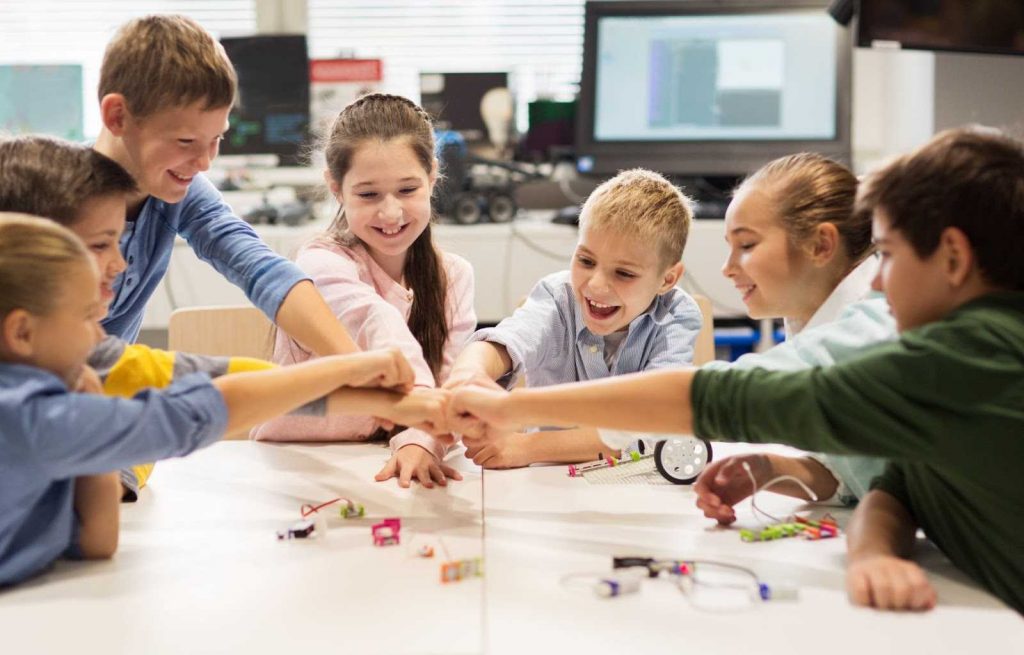
Best for: All age groups, with a particular emphasis on Middle School, High School, and College students (ages 12-22)
Collaborative Learning Strategies are teaching models that emphasize the power of collective intelligence. In this approach, students work together in groups, leveraging each member’s strengths and knowledge. It’s rooted in the belief that collaborative processes can lead to deeper understanding and more meaningful learning experiences than individual efforts alone.
Advantage: Fosters teamwork , enhances communication skills , and exposes students to diverse perspectives.
Disadvantages: Can be challenging to manage, and individual assessment might be tricky.
Example: Students working in groups to create a presentation on a specific topic, dividing tasks and combining their research.
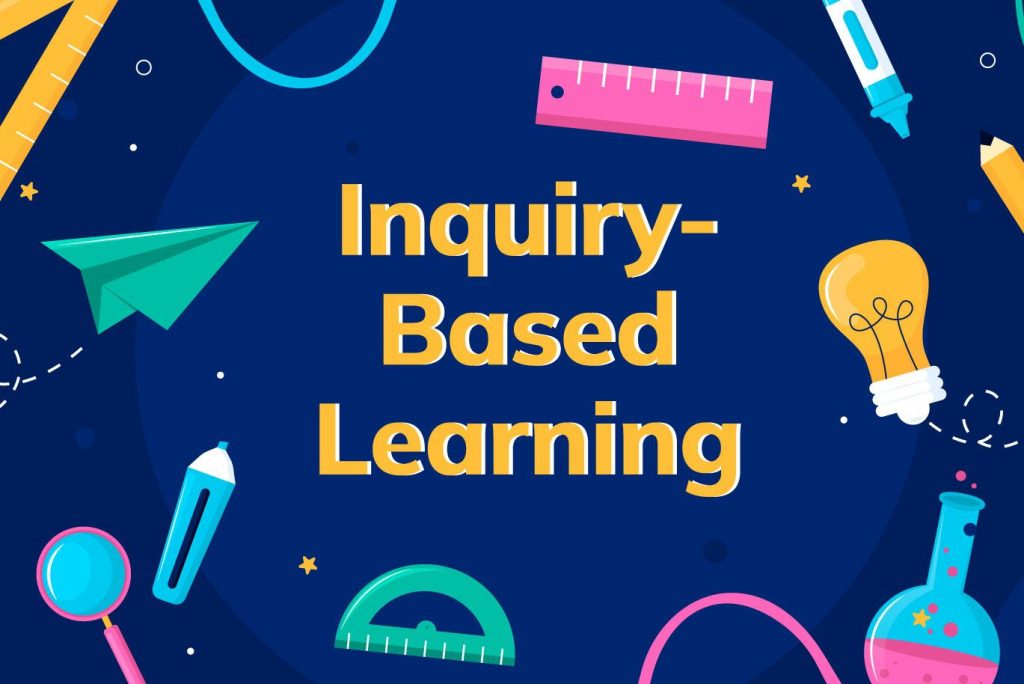
Inquiry-Based Learning is a teaching method that places students at the heart of the learning process. Instead of being passive recipients of information, students are encouraged to ask questions, investigate, and explore topics in depth. This method transforms classrooms into hubs of curiosity and active learning , where students drive the educational journey.
Advantage: Encourages critical thinking, fosters curiosity, and promotes independent research skills.
Disadvantages: Might require more preparation time and can be challenging to guide without leading.
Example: Instead of directly teaching a scientific concept, posing a question like “Why do apples fall from trees?” and guiding students to discover the concept of gravity.
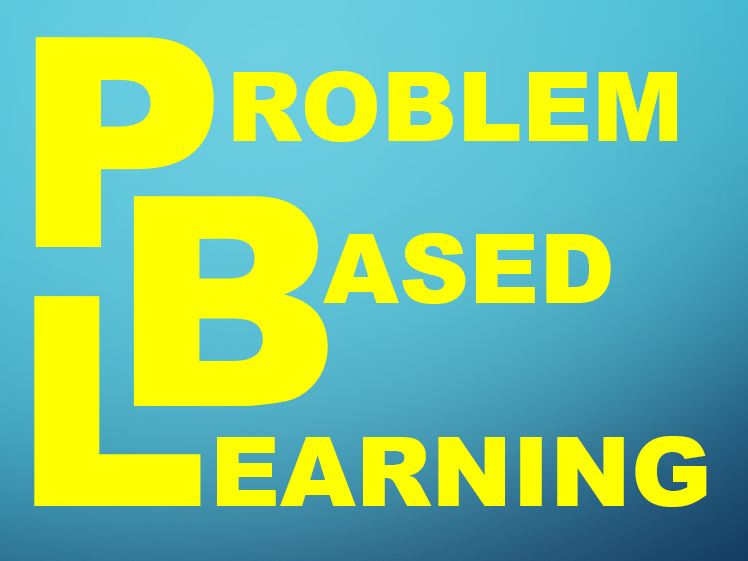
Problem-based Learning is one of the teaching model that centers around presenting students with real-world problems and challenging them to find solutions. Instead of traditional instruction, students use critical thinking, collaboration, and research skills to address complex issues, making learning more relevant and applicable.
Advantage: Enhances problem-solving skills, makes learning relevant, and fosters collaboration.
Disadvantages: Requires well-defined problems and can be time-consuming.
Example: Presenting students with a real-world environmental issue and asking them to devise sustainable solutions.
Best for: All age groups, but especially beneficial for Elementary and Middle School students (ages 6-14)
Personalized Learning is one of the different teaching method that tailors the educational experience to meet the unique needs, interests, and strengths of each student. Instead of a one-size-fits-all approach, content, pace, and learning methods are adapted for individual learners.
Advantage: Addresses individual learning needs, promotes student autonomy, and can lead to deeper understanding.
Disadvantages: Requires extensive resources and can be challenging to implement in larger classrooms.
Example: Using adaptive learning software that adjusts the difficulty level based on a student’s performance.
Discover the power of personalized learning. Tailor the educational journey to each student’s needs and watch their understanding deepen.
11. Kinesthetic Learning
Best for: Elementary and Middle School students (ages 6-14), but can benefit learners of all ages.
Kinesthetic Learning is among the teaching method examples that cater to learners who understand and retain information best through physical activities. Instead of just listening or watching, kinesthetic learners benefit from doing, moving, and touching.
Advantage: Engages active learners, enhances retention for those who learn best through movement, and can make abstract concepts more tangible.
Disadvantages: Can be disruptive in traditional classroom settings and might not cater to all learners.
Example: Teaching geometry concepts using physical shapes that students can manipulate and explore.
12. Competency-based Learning
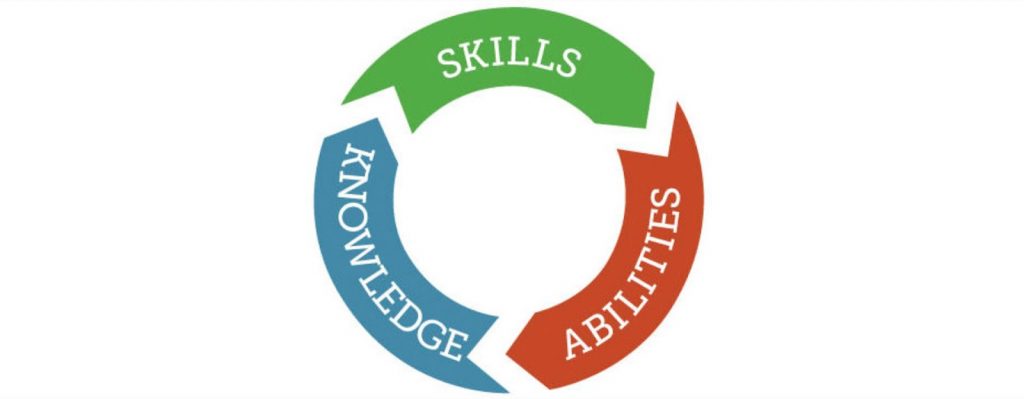
Best for: High School, College students, and Adult learners (ages 15 and above)
Competency-based Learning focuses on ensuring students achieve specific skills or competencies at their own pace. Instead of time-based progression, students move forward when they demonstrate mastery of a particular skill or topic.
Advantage: Ensures deep understanding, allows students to progress at their own pace, and focuses on mastery over time spent.
Disadvantages: Requires clear competency definitions and can be challenging to assess.
Example: A course where students progress to the next module only after passing a competency test on the current module.
In the ever-evolving landscape of education, it’s imperative for educators to stay updated with diverse teaching methods that cater to all learners. From game-based learning to specialized techniques for students with special needs, embracing a multifaceted approach ensures every student’s potential is realized. As we journey forward, let’s champion inclusivity, innovation, and individuality in our classrooms, crafting a brighter, more inclusive future for all learners.
Embrace the teaching methods of tomorrow and ensure your students aren’t left behind.
Frequently Asked Questions (FAQs)
How can educators stay updated with the latest teaching methods.
Educators can attend professional development workshops, join educational forums, read industry journals, and collaborate with peers to stay updated.
Are traditional teaching methods now obsolete?
No, traditional methods still have value. The key is to blend them with modern approaches to cater to diverse learning needs effectively.
How can technology complement these teaching methods?
Technology offers tools and platforms that can enhance engagement, provide personalized learning experiences, and facilitate collaboration among students.
Is it challenging to implement multiple teaching methods in one classroom?
While it can be challenging, with careful planning and flexibility, educators can effectively integrate multiple methods to benefit all students.
Most Popular

15 Best Report Card Comments Samples

117 Best Riddles for Kids (With Explanation)


40 Best Good Vibes Quotes to Brighten Your Day
Recent posts.

30 End of the School Year Quotes for Students and Teachers

Math & ELA | PreK To Grade 5
Kids see fun., you see real learning outcomes..
Watch your kids fall in love with math & reading through our scientifically designed curriculum.
Parents, try for free Teachers, use for free

- Games for Kids
- Worksheets for Kids
- Math Worksheets
- ELA Worksheets
- Math Vocabulary
- Number Games
- Addition Games
- Subtraction Games
- Multiplication Games
- Division Games
- Addition Worksheets
- Subtraction Worksheets
- Multiplication Worksheets
- Division Worksheets
- Times Tables Worksheets
- Reading Games
- Writing Games
- Phonics Games
- Sight Words Games
- Letter Tracing Games
- Reading Worksheets
- Writing Worksheets
- Phonics Worksheets
- Sight Words Worksheets
- Letter Tracing Worksheets
- Prime Number
- Order of Operations
- Long multiplication
- Place value
- Parallelogram
- SplashLearn Success Stories
- SplashLearn Apps
- [email protected]
© Copyright - SplashLearn

Make learning a game for your students
Unlock endless learning fun with 14,000+ games & activities, 450+ lesson plans, and more—free forever.
Teachers, Use for Free

ChatGPT for Teachers
Trauma-informed practices in schools, teacher well-being, cultivating diversity, equity, & inclusion, integrating technology in the classroom, social-emotional development, covid-19 resources, invest in resilience: summer toolkit, civics & resilience, all toolkits, degree programs, trauma-informed professional development, teacher licensure & certification, how to become - career information, classroom management, instructional design, lifestyle & self-care, online higher ed teaching, current events, what is your teaching style 5 effective teaching methods for your classroom.
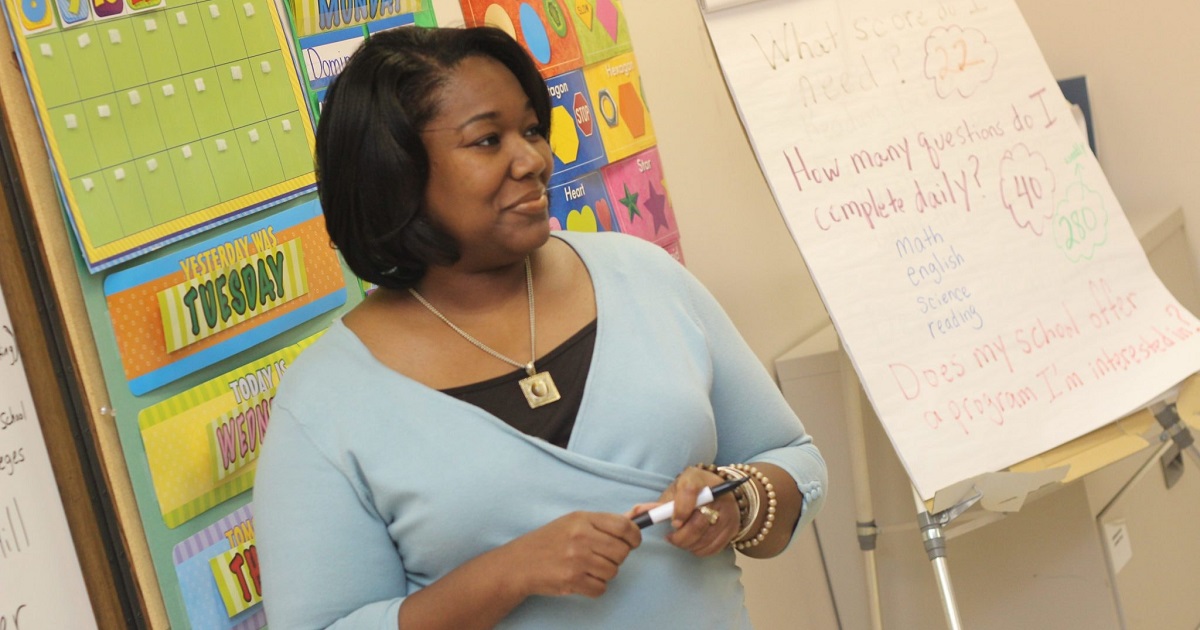
Every teacher has her or his own style of teaching. And as traditional teaching styles evolve with the advent of differentiated instruction, more and more teachers are adjusting their approach depending on their students’ learning needs.
But there are a few fundamental teaching styles most educators tend to use. Which one is yours?
You’ve Got Style
These teaching styles highlight the five main strategies teachers use in the classroom, as well as the benefits and potential pitfalls of each.
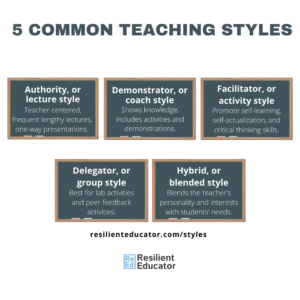
The Authority, or lecture style
The authority model is teacher-centered and frequently entails lengthy lecture sessions or one-way presentations. Students are expected to take notes or absorb information.
- Pros : This style is acceptable for certain higher-education disciplines and auditorium settings with large groups of students. The pure lecture style is most suitable for subjects like history, which necessitate memorization of key facts, dates, names, etc.
- Cons : It’s a questionable model for teaching children because there is little or no interaction with the teacher. Plus it can get a little snooze-y. That’s why it’s a better approach for older, more mature students.
The Demonstrator, or coach style
The demonstrator retains the formal authority role by showing students what they need to know. The demonstrator is a lot like the lecturer, but their lessons include multimedia presentations, activities, and demonstrations. (Think: Math. Science. Music.)
- Pros : This style gives teachers opportunities to incorporate a variety of formats including lectures and multimedia presentations.
- Cons : Although it’s well-suited for teaching mathematics, music, physical education, or arts and crafts, it is difficult to accommodate students’ individual needs in larger classrooms.
The Facilitator, or activity style
Facilitators promote self-learning and help students develop critical thinking skills and retain knowledge that leads to self-actualization.
- Pros : This style trains students to ask questions and helps develop skills to find answers and solutions through exploration; it is ideal for teaching science and similar subjects.
- Cons : Challenges teacher to interact with students and prompt them toward discovery rather than lecturing facts and testing knowledge through memorization. So it’s a bit harder to measure success in tangible terms.
The Delegator, or group style
The delegator style is best suited for curricula that require lab activities, such as chemistry and biology, or subjects that warrant peer feedback, like debate and creative writing.
- Pros : Guided discovery and inquiry-based learning place the teacher in an observer role that inspires students by working in tandem toward common goals.
- Cons : Considered a modern style of teaching, it is sometimes criticized as eroding teacher authority. As a delegator, the teacher acts more as a consultant rather than the traditional authority figure.
The Hybrid, or blended style
Hybrid, or blended style, follows an integrated approach to teaching that blends the teacher’s personality and interests with students’ needs and curriculum-appropriate methods.
- Pros : Inclusive! And it enables teachers to tailor their styles to student needs and appropriate subject matter.
- Cons : Hybrid style runs the risk of trying to be too many things to all students, prompting teachers to spread themselves too thin and dilute learning.
Because teachers have styles that reflect their distinct personalities and curriculum—from math and science to English and history—it’s crucial that they remain focused on their teaching objectives and avoid trying to be all things to all students.
What you need to know about your teaching style
Although it is not the teacher’s job to entertain students, it is vital to engage them in the learning process. Selecting a style that addresses the needs of diverse students at different learning levels begins with a personal inventory—a self-evaluation—of the teacher’s strengths and weaknesses. As they develop their teaching styles and integrate them with effective classroom management skills, teachers will learn what works best for their personalities and curriculum.
Our guide encapsulates today’s different teaching styles and helps teachers identify the style that’s right for them and their students. Browse through the article or use these links to jump to your desired destination.
- What is a teaching style inventory, and how have teaching styles evolved?
- What teaching method is best for today’s students?
How does classroom diversity influence teachers?
Emergence of the teaching style inventory.
How have teaching styles evolved? This is a question teachers are asked, and frequently ask themselves, as they embark on their careers, and occasionally pause along the way to reflect on job performance. To understand the differences in teaching styles, it’s helpful to know where the modern concept of classifying teaching methods originated.
The late Anthony F. Grasha, a noted professor of psychology at the University of Cincinnati, is credited with developing the classic five teaching styles. A follower of psychiatrist Carl Jung, Grasha began studying the dynamics of the relationship between teachers and learning in college classrooms. His groundbreaking book, Teaching with Style , was written both as a guide for teachers and as a tool to help colleagues, administrators and students systematically evaluate an instructor’s effectiveness in the classroom.
Grasha understood that schools must use a consistent, formal approach in evaluating a teacher’s classroom performance. He recognized that any system designed to help teachers improve their instructional skills requires a simple classification system. He developed a teaching style inventory that has since been adopted and modified by followers.
- Expert : Similar to a coach, experts share knowledge, demonstrate their expertise, advise students, and provide feedback to improve understanding and promote learning.
- Formal authority : Authoritative teachers incorporate the traditional lecture format and share many of the same characteristics as experts, but with less student interaction.
- Personal model : Incorporates blended teaching styles that match the best techniques with the appropriate learning scenarios and students in an adaptive format.
- Facilitator : Designs participatory learning activities and manages classroom projects while providing information and offering feedback to facilitate critical thinking.
- Delegator : Organizes group learning, observes students, provides consultation, and promotes interaction between groups and among individuals to achieve learning objectives.
Although he developed specific teaching styles, Grasha warned against boxing teachers into a single category. Instead, he advocated that teachers play multiple roles in the classroom. He believed most teachers possess some combination of all or most of the classic teaching styles.
How does differentiated instruction affect teaching styles?
Carol Ann Tomlinson, a professor at the University of Virginia, is an early advocate of differentiated instruction and a pioneer in the development of learning-based teaching styles. If Grasha laid the groundwork for 20th-century teachers to adopt styles tailored to match their personalities and strengths, Tomlinson has advanced this theme into the 21st century by focusing on differentiated instruction.
In the simplest terms, differentiated instruction means keeping all students in mind when developing lesson plans and workbook exercises, lectures, and interactive learning. These student-focused differences necessitate instructional styles that embrace diverse classrooms for students at all learning levels and from various backgrounds without compromising the teacher’s strengths.
What teaching style is best for today’s students?
Whether you’re a first-year teacher eager to put into practice all of the pedagogical techniques you learned in college, or a classroom veteran examining differentiated instruction and new learning methodologies, consider that not all students respond well to one particular style. Although teaching styles have been categorized into five groups, today’s ideal teaching style is not an either/or proposition but more of a hybrid approach that blends the best of everything a teacher has to offer.
The traditional advice that teachers not overreach with a cluster of all-encompassing teaching styles might seem to conflict with today’s emphasis on student-centered classrooms. Theoretically, the more teachers emphasize student-centric learning, the harder it is to develop a well-focused style based on their personal attributes, strengths, and goals.
In short, modern methods of teaching require different types of teachers—from the analyst/organizer to the negotiator/consultant. Here are some other factors to consider as teachers determine the best teaching method for their students.
Empty vessel : Critics of the “sage on the stage” lecture style point to the “empty vessel” theory, which assumes a student’s mind is essentially empty and needs to be filled by the “expert” teacher. Critics of this traditional approach to teaching insist this teaching style is outmoded and needs to be updated for the diverse 21st-century classroom.
Active vs. passive : Proponents of the traditional lecture approach believe that an overemphasis on group-oriented participatory teaching styles, like facilitator and delegator, favor gifted and competitive students over passive children with varied learning abilities, thereby exacerbating the challenges of meeting the needs of all learners.
Knowledge vs. information : Knowledge implies a complete understanding, or full comprehension, of a particular subject. A blend of teaching styles that incorporate facilitator, delegator, demonstrator, and lecturer techniques helps the broadest range of students acquire in-depth knowledge and mastery of a given subject. This stands in contrast to passive learning, which typically entails memorizing facts, or information, with the short-term objective of scoring well on tests.
Interactive classrooms : Laptops and tablets, video conferencing, and podcasts in classrooms play a vital role in today’s teaching styles. With technology in mind, it is imperative that teachers assess their students’ knowledge while they are learning. The alternative is to wait for test results, only to discover knowledge gaps that should have been detected during the active learning phase.
Constructivist teaching methods : Contemporary teaching styles tend to be group-focused and inquiry-driven. Constructivist teaching methods embrace subsets of alternative teaching styles, including modeling, coaching, and test preparation through rubrics scaffolding. All of these are designed to promote student participation and necessitate a hybrid approach to teaching. One criticism of the constructivist approach is that it caters to extroverted, group-oriented students, who tend to dominate and benefit from these teaching methods more than introverts; however, this assumes introverts aren’t learning by observing.
Student-centric learning does not have to come at the expense of an instructor’s preferred teaching method. However, differentiated instruction demands that teachers finesse their style to accommodate the diverse needs of 21st-century classrooms.
The ‘sage on the stage’ meets the ‘tiger mom’
The objective of blending teaching styles to leverage the teacher’s strengths while meeting the demands of diverse students has become increasingly difficult, as parents take a decidedly proactive role in child-learning techniques.
The traditional authoritative/expert, or “sage on the stage” lecture style, has come under attack by some parents—and contemporary educational leaders—who emphasize that a more diverse approach to teaching is necessary to engage students. This is compounded by the rise of “tiger moms,” a term made popular by parents devoted to improving the quality of education with laser-precision focus on A-list schools and a highly competitive job market.
Age of the proactive parent
Regardless of what style a teacher adopts, it’s important for teachers to develop positive attitudes, set goals, and establish high expectations for students.
“Assume students can excel!” education authors Harry and Rosemary Wong declare. As former teachers with a combined 80-plus years of educational experience, the Wongs emphasize in their best-selling book, The First Days of School: How to Be an Effective Teacher and their more recent, The Classroom Management Book that successful teachers share three common characteristics:
- effective classroom management skills
- lesson mastery
- positive expectations
All instructors, when developing their teaching styles, should keep in mind these three goals, as well as the primary objective of education: student learning.
It is abundantly clear that today’s teachers are responsible for students with a diverse range of learning abilities. The 21st-century teacher does not have the luxury of “picking the low-hanging fruit” and then leaving the rest of the tree for experts who specialize in children with behavioral issues or learning disorders.
Today’s teachers must develop instructional styles that work well in diverse classrooms. Effective teaching methods engage gifted students, as well as slow-learning children and those with attention deficit tendencies. This is where differentiated instruction and a balanced mix of teaching styles can help reach all students in a given classroom—not just the few who respond well to one particular style of teaching.
The wonderment of teaching, what author/educator Dr. Harry Wong refers to as “that a-ha moment” when a child “gets it,” is one of the most rewarding and seemingly elusive benefits of becoming a teacher. This transfer of knowledge from expert to student is an art form and a skill. Fortunately, both can be learned and perfected.
Knowing how to engage students begins with selecting the teaching style that’s right for you. And remember, even though you may prefer one teaching style over another, you must find the style that works best for your students! Try different styles to meet different objectives, and always challenge yourself to find ways to reach each student.
You may also like to read
- Effective Teaching Strategies for Adolescent Literacy Teachers
- Effective Teaching Strategies for Special Education
- Activities for Teaching Tolerance in the Classroom
- Interactive Teaching Styles Used in the Classroom
Categorized as: Tips for Teachers and Classroom Resources
Tagged as: Leadership and Administration , Mid-Career Teacher , New Teacher , Professional Development , Veteran Teacher
- Master's in Teaching Online | Distance-Learni...
- Online & Campus Master's in Elementary Educat...
- Certificates for Reading Specialist
Request More Info
Fill out the form below and a member of our team will reach out right away!
" * " indicates required fields
The Complete List of Teaching Methods

Teaching Methods: Not as Simple as ABC
Teaching methods [teacher-centered], teaching methods [student-centered], what about blended learning and udl, teaching methods: a to z, for the love of teaching.
Whether you’re a longtime educator, preparing to start your first teaching job or mapping out your dream of a career in the classroom, the topic of teaching methods is one that means many different things to different people.
Your individual approaches and strategies to imparting knowledge to your students and inspiring them to learn are probably built on your academic education as well as your instincts and intuition.
Whether you come by your preferred teaching methods organically or by actively studying educational theory and pedagogy, it can be helpful to have a comprehensive working knowledge of the various teaching methods at your disposal.
YOU’RE INVITED! Watch Free Webinar on USD’s Online MEd Program >>
The teacher-centered approach vs. the student-centered approach. High-tech vs. low-tech approaches to learning. Flipped classrooms, differentiated instruction, inquiry-based learning, personalized learning and more.
Not only are there dozens of teaching methods to explore, it is also important to have a sense for how they often overlap or interrelate. One extremely helpful look at this question is offered by the teacher-focused education website Teach.com.
“Teaching theories can be organized into four categories based on two major parameters: a teacher-centered approach versus a student-centered approach, and high-tech material use versus low-tech material use,” according to the informative Teach.com article , which breaks down a variety of influential teaching methods as follows:
Teacher-Centered Approach to Learning Teachers serve as instructor/authority figures who deliver knowledge to their students through lectures and direct instruction, and aim to measure the results through testing and assessment. This method is sometimes referred to as “sage on the stage.”
Student-Centered Approach to Learning Teachers still serve as an authority figure, but may function more as a facilitator or “guide on the side,” as students assume a much more active role in the learning process. In this method, students learn from and are continually assessed on such activities as group projects, student portfolios and class participation.
High-Tech Approach to Learning From devices like laptops and tablets to using the internet to connect students with information and people from around the world, technology plays an ever-greater role in many of today’s classrooms. In the high-tech approach to learning, teachers utilize many different types of technology to aid students in their classroom learning.
Low-Tech Approach to Learning Technology obviously comes with pros and cons, and many teachers believe that a low-tech approach better enables them to tailor the educational experience to different types of learners. Additionally, while computer skills are undeniably necessary today, this must be balanced against potential downsides; for example, some would argue that over-reliance on spell check and autocorrect features can inhibit rather than strengthen student spelling and writing skills.
[RELATED] Edutainment in the Classroom: How Technology Is Changing the Game >>
Diving further into the overlap between different types of teaching methods, here is a closer look at three teacher-centered methods of instruction and five popular student-centered approaches.
Direct Instruction (Low Tech) Under the direct instruction model — sometimes described as the “traditional” approach to teaching — teachers convey knowledge to their students primarily through lectures and scripted lesson plans, without factoring in student preferences or opportunities for hands-on or other types of learning. This method is also customarily low-tech since it relies on texts and workbooks rather than computers or mobile devices.
Flipped Classrooms (High Tech) What if students did the “classroom” portion of their learning at home and their “homework” in the classroom? That’s an oversimplified description of the flipped classroom approach, in which students watch or read their lessons on computers at home and then complete assignments and do problem-solving exercises in class.
Kinesthetic Learning (Low Tech) In the kinesthetic learning model, students perform hands-on physical activities rather than listening to lectures or watching demonstrations. Kinesthetic learning, which values movement and creativity over technological skills, is most commonly used to augment traditional types of instruction — the theory being that requiring students to do, make or create something exercises different learning muscles.
Differentiated Instruction (Low Tech) Inspired by the 1975 Individuals with Disabilities Education Act (IDEA), enacted to ensure equal access to public education for all children, differentiated instruction is the practice of developing an understanding of how each student learns best, and then tailoring instruction to meet students’ individual needs.
In some instances, this means Individualized Education Programs (IEPs) for students with special needs, but today teachers use differentiated instruction to connect with all types of learners by offering options on how students access content, the types of activities they do to master a concept, how student learning is assessed and even how the classroom is set up.
Inquiry-Based Learning (High Tech) Rather than function as a sole authority figure, in inquiry-based learning teachers offer support and guidance as students work on projects that depend on them taking on a more active and participatory role in their own learning. Different students might participate in different projects, developing their own questions and then conducting research — often using online resources — and then demonstrate the results of their work through self-made videos, web pages or formal presentations.
Expeditionary Learning (Low Tech) Expeditionary learning is based on the idea that there is considerable educational value in getting students out of the classroom and into the real world. Examples include trips to City Hall or Washington, D.C., to learn about the workings of government, or out into nature to engage in specific study related to the environment. Technology can be used to augment such expeditions, but the primary focus is on getting out into the community for real-world learning experiences.
Personalized Learning (High Tech) In personalized learning, teachers encourage students to follow personalized, self-directed learning plans that are inspired by their specific interests and skills. Since assessment is also tailored to the individual, students can advance at their own pace, moving forward or spending extra time as needed. Teachers offer some traditional instruction as well as online material, while also continually reviewing student progress and meeting with students to make any needed changes to their learning plans.
Game-Based Learning (High Tech) Students love games, and considerable progress has been made in the field of game-based learning, which requires students to be problem solvers as they work on quests to accomplish a specific goal. For students, this approach blends targeted learning objectives with the fun of earning points or badges, much like they would in a video game. For teachers, planning this type of activity requires additional time and effort, so many rely on software like Classcraft or 3DGameLab to help students maximize the educational value they receive from within the gamified learning environment.
Blended Learning Blended learning is another strategy for teachers looking to introduce flexibility into their classroom. This method relies heavily on technology, with part of the instruction taking place online and part in the classroom via a more traditional approach, often leveraging elements of the flipped classroom approach detailed above. At the heart of blended learning is a philosophy of taking the time to understand each student’s learning style and develop strategies to teach to every learner, by building flexibility and choice into your curriculum.
Universal Design for Learning (UDL) UDL incorporates both student-centered learning and the “multiple intelligences theory,” which holds that different learners are wired to learn most effectively in different ways (examples of these “intelligences” include visual-spatial, logical-mathematical, bodily-kinesthetic, linguistic, musical, etc.). In practice, this could mean that some students might be working on a writing project while others would be more engaged if they created a play or a movie. UDL emphasizes the idea of teaching to every student, special needs students included, in the general education classroom, creating community and building knowledge through multiple means.
[RELATED] Career Options Expand, Salaries Spike with a Master of Education Degree >>
In addition to the many philosophical and pedagogical approaches to teaching, classroom educators today employ diverse and sometimes highly creative methods involving specific strategies, prompts and tools that require little explanation. These include:
- Appointments with students
- Art-based projects
- Audio tutorials
- Author’s chair
- Book reports
- Bulletin boards
- Brainstorming
- Case studies
- Chalkboard instruction
- Class projects
- Classroom discussion
- Classroom video diary
- Collaborative learning spaces
- Creating murals and montages
- Current events quizzes
- Designated quiet space
- Discussion groups
- DIY activities
- Dramatization (plays, skits, etc.)
- Educational games
- Educational podcasts
- Essays (Descriptive)
- Essays (Expository)
- Essays (Narrative)
- Essays (Persuasive)
- Exhibits and displays
- Explore different cultures
- Field trips
- Flash cards
- Flexible seating
- Gamified learning plans
- Genius hour
- Group discussion
- Guest speakers
- Hands-on activities
- Individual projects
- Interviewing
- Laboratory experiments
- Learning contracts
- Learning stations
- Literature circles
- Making posters
- Mock conventions
- Motivational posters
- Music from other countries/cultures
- Oral reports
- Panel discussions
- Peer partner learning
- Photography
- Problem solving activities
- Reading aloud
- Readers’ theater
- Reflective discussion
- Research projects
- Rewards & recognition
- Role playing
- School newspapers
- Science fairs
- Sister city programs
- Spelling bees
- Storytelling
- Student podcasts
- Student portfolios
- Student presentations
- Student-conceived projects
- Supplemental reading assignments
- Team-building exercises
- Term papers
- Textbook assignments
- Think-tac-toe
- Time capsules
- Use of community or local resources
- Video creation
- Video lessons
- Vocabulary lists
So, is the teacher the center of the educational universe or the student? Does strong reliance on the wonders of technology offer a more productive educational experience or is a more traditional, lower-tech approach the best way to help students thrive?
Questions such as these are food for thought for educators everywhere, in part because they inspire ongoing reflection on how to make a meaningful difference in the lives of one’s students.
[RELATED] University of San Diego Online MEd Program Offers 6 Areas of Specialization >>
Be Sure To Share This Article
- Share on Twitter
- Share on Facebook
- Share on LinkedIn
In our free guide, you can learn about a variety of teaching methods to adopt in the classroom.
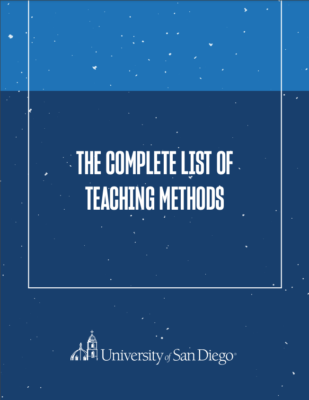
- Master of Education
Related Posts

SAY GOODBYE TO JAMB,GAIN DIRECT ENTRY ÀDMISSION INTO 200LEVEL TO STUDY YOUR DESIRED COURSE IN ANY UNIVERSITY OF YOUR CHOICE.LOW FEES. REGISTRATION IS IN PROGRESS . CALL / WHATSAPP 09059908384.
Teaching Methods: Definition, Types, Best Teaching Methods For All Levels
Teaching methods, as it pertains to education, are the techniques and strategies teachers use to help students succeed. Teaching methods can be classified into three categories: instructional design (teacher-led), student-centered (learner-directed), and collaborative/cooperative (group-oriented).
Learning is a process that can be assisted by various methods and techniques. The most common and best method of teaching and learning is the lectures method. Lectures are one of the many different teaching methods used to teach students about the course content. This blog post will discuss what teaching methods are, how they work, and other various types of teaching methods!
Recommended: Examlabs for Students and Tutors
What is a Teaching Method?
The teaching method is the strategy used to convey information for students to learn, it involves careful educational evaluation and assessments in ensuring the right knowledge is passed on to the pupils. Teaching methods can vary from institution to institution, but lectures are a standard method used in the classroom. The best method of teaching focuses on the best way to convey information for students of all different types. However, lectures are one of the more effective ways to do this because they allow instructors to use the best teaching method possible by covering a lot of ground for their lessons to be clearly understood!
A teaching method is a specific way in which teachers teach students. There are many different types and styles of education that teachers use when they interact with students. These methods may be used by either private or public school educators depending on their personal preference or state requirements for teacher certification. The type of education title you obtain will also depend upon your choice of educational style since there are several titles associated with each particular method. However, there are certain vital factors that you should consider before selecting your favorite technique for pedagogy, such as:
- What age group will be studying?
- What level of education does everyone have?
- Are they beginners or experts in their field already?
- How much time do I have to work with them, and how long can my attention span last when working individually/in groups?
- Do I want more information about the topic than just the basics. So, is it an educational experience, or do I need something fun and entertaining for people who don’t know anything about the subject matter at hand?
9 Types of Teaching Methods
1. lecture mode.
Lecture learning is one of the most common methods for teaching and learning in higher institutions of seminar. This method involves a teacher standing in front of students and talking about course content they need to know or understand. Some benefits of lectures include: students can ask questions if they do not understand something, teachers have complete control over what information gets shared with students during this type of instruction, and sometimes allow time so students can take notes on important concepts taught by the instructor. However, some challenges are associated with lecture learning, including how it may be boring for students who prefer more hands-on activities and lack engagement between instructors and their learners.
The lecture method help to break the topic into different segments and present them in smaller chunks. Instructors can use PowerPoint slides, videos, or online resources to help teach students about the course content. In addition, lecture methods are best used when instructors need more time to prepare for their lessons . Lectures can also be best used when instructors need to cover a lot of material in the shortest amount of time possible!
How Do Lectures Work?
Lectures work best when instructors have a lot of material to cover in the classroom. This method is best used when there isn’t enough time for students to engage with their course content from other perspectives, such as through group projects, small group activities, or hands-on learning. Lecture methods are best taught by teachers who can keep students’ attention and clearly share information so everyone can understand what is being said.
2. Problem Solving
This method of teaching involves having students work on specific problems or challenges directly related to course content being taught in class. Some benefits include increased engagement, students learning more deeply about the material, and allowing for more hands-on activities with instructors who may be standing at a whiteboard working through solutions together with their learners. However, there are some cons associated with this form, including the time needed for preparation if not familiarized beforehand with the topic/concepts covered during instruction. It can also be challenging to monitor all learners’ progress.
How Does Problem Solving Work?
Problem-solving involves the instructor presenting a problem or challenge to the students and then breaking up into small groups to work together on finding solutions. This method of teaching best suits visual, auditory, or kinesthetic learners because it allows students to engage with the material in different ways. During this type of instruction, teachers should closely monitor student progress, so all individuals make significant contributions and stay on task. They should also be engaged throughout each lesson period.
3. Role Playing
This teaching method involves having students dress up as characters and act out different situations/scenarios related to the material being taught at hand. Some benefits include increased engagement, allowing for hands-on activities with instructors who may participate, and opportunities for student practice before applying these newly learned skills outside their classroom. However, role-playing challenges include the time needed for preparation if not familiarized beforehand with the topic/concepts covered during instruction.
How Does Role-Playing Work?
The best way that role-playing can work is by allowing the instructor to present topics or concepts covered during the lecture time frame while also incorporating small groups into acting out scenarios related to these lessons. During this type of instruction, teachers should monitor student progress closely, so all individuals make significant contributions and everyone stays on task.
4. Group Work
Group work involves having students work with their classmates cooperatively on different assignments related to the material they are being taught at hand. Some benefits include increased engagement and learning more deeply about concepts through collaboration. However, there are drawbacks associated with group work, including the time needed for students’ preparation if not familiarized beforehand with the topic/concepts.
How does group work functions best in a learning environment?
First, students must be familiarized beforehand with the concepts and content they will learn. Then instructors must give their students specific instructions on how best to complete an assignment or project so that each student can best participate and contribute to the overall group effort. Students should also be given time for individual learning before applying these newly learned skills during group work.
5. Games Method of Teaching
Another type of teaching method includes games or activities. It involves having students participate in interactive elements such as board games related to the concepts being taught. Some benefits include increased engagement, learning more deeply about the material through hands-on activities with instructors who may actively participate, and shortening lesson times.
Games can be used to reinforce material that students have already learned. For example, after a lecture has been given on the French Revolution and its causes, instructors may choose to play Jeopardy with their classes using terms like “monarchy,” “revolution,” and other concepts discussed in the lecture. It helps students review and retain information from a previous lesson while encouraging them to participate with one another.
How Does The Game Method of Teaching Work?
In this teaching approach, students are divided into groups. Each group has a different task in the game that they must complete before receiving points or “credits” to move on in their games. For example, one group might have to identify specific countries or continents on the board in a geography course while another has to list capital cities. Instructors can incorporate concepts into these games by rewarding groups who correctly answer questions with more credits than other teams.
6. Flipped Classroom
How does flipped classroom work.
The flipped classroom method of teaching has allowed students to familiarize themselves with course materials outside of class time to participate more actively during classroom lectures. Several benefits come along with this form of learning, including increased student engagement and instructor feedback during the lesson itself. This method also provides students more opportunities for practice before applying what they have learned to other tasks outside their classroom environment. However, there are some difficulties associated with using the flipped class model as well. One major drawback is that instructors may not have enough time to prepare for their lectures because they are limited by the amount of preparation they can do before students come into class. Additionally, students may not be as closely monitored by their instructors because they now have the responsibility of completing homework assignments on their own.
7. Self-Paced Learning
In a self-paced learning environment, there is no set time when the class meets. When using this method, students take responsibility for their learning.
In these environments, instructors offer little to no guidance or feedback during instruction, allowing students to learn independently. Some benefits include increased engagement and student independence in terms of doing coursework. It can also be seen as giving self-study opportunities that previously would not have been available due to lack of instructor availability/time. However, some challenges are associated with this form, including less time spent together outside class which could lead to feelings of isolation or loneliness. Students may not always understand the concepts and may have to take time out of their day to seek help from peers. Many examples of student projects completed using self-paced learning include research papers, science fairs, presentations, art projects, etc.
How Does Self-Paced Learning Work?
Instructors create self-paced learning courses to help students complete coursework on their own time. Students work at their own pace and meet with an instructor when they need assistance understanding a concept or completing a major assignment/project.
Self-paced learning is unique in that it doesn’t rely on meetings or set times for students and instructors to meet. Students are responsible for working independently, making this method different from other methods where the instructor schedules classes. This teaching method also allows students with busy schedules more flexibility, as they can work on coursework at their own pace without having to miss class due to conflicting work/school schedules.
8. Student-Centered Learning
Finally, there is another approach called “Student-Centered Learning”. In this environment, instructors are more hands-off during lectures, allowing students to discuss topics at hand. Some benefits include increased engagement among classmates as it creates a classroom community feeling where everyone feels comfortable being themselves. However, some challenges are associated with this form. They include a lack of structure, which can also be seen as overwhelming by some learners who prefer clear guidelines on what needs completing throughout the semester. Also, students may feel as though they have not been given clear instructions on what to do, which may lead them to feelings of confusion or lack of motivation.
How Does Student-Centered Learning Work?
Some instructors may be highly involved in lecture sessions, while others give students more opportunities to work together or ask questions. The latter is generally the case when teaching introductory courses, which require less guidance than advanced topics. In this type of learning environment, students are expected to be active members in learning. The instructor needs to ensure that each student has an equal opportunity to master course content.
9. Montessori Teaching Method
This is the new cool for elementary schools. That is from pre-school to nursery and down to primary school level. It is now the most adopted method of teaching practiced amongst educationists. This method of teaching involves using creative tools that physically and mentally help kids to easily understand and memorize what is being taught. Montessori teachers are highly trained tutors who know how to impart knowledge into the kids using the Montessori teaching materials. Amongst all the teaching methods for Nursery and Primary school level, the Montessori method of teaching is the best.
A typical Montessori class room.
Having defined Teaching method, listed and explained in full, the types of teaching method, we can deduce from above the best method of teaching.
What is Best Method of Teaching?
The best method depends on various factors and circumstances. all teaching methods listed above depends on the institutional grade which in-turn has a direct relationship with the mental capacity of the students or pupils being taught. For example, for nursery and primary school level otherwise known as the elementary of foundational level, the Montessori method of teaching is the best due to the level of assimilation.
Gaming method is another practical method of teaching that best suits primary and secondary school level. The lecture mode of teaching is best suitable for a larger crowd because its conveys the lecturer’s message and students jot down. Lectures are one of the best methods of teaching for higher institution because they allow instructors to convey information quickly and efficiently. There is no better way to explain something than by doing it yourself! Having an instructor explain course content firsthand is beneficial for students who may be visual learners, auditory learners, or any other type of learner.
As said earlier, choosing the best teaching method is relative and it depends on the circumstance and environment that best suits convey seamlessly the message being passed to the students.
Various teaching methods can be used when instructing students at all levels of education, including elementary school through university or college-level courses. We can use lectures, games, activities, demonstrations, and many other teaching methods in the classroom to teach students about concepts and ideas that will hopefully remain for a long time. In addition to these traditional methods, exploring top masterclass courses can offer students a unique opportunity to learn from leading experts in various fields, further enriching their educational journey.
Share this:

Explore More
Stay in our orbit.
Stay connected with industry news, resources for English teachers and job seekers, ELT events, and more.
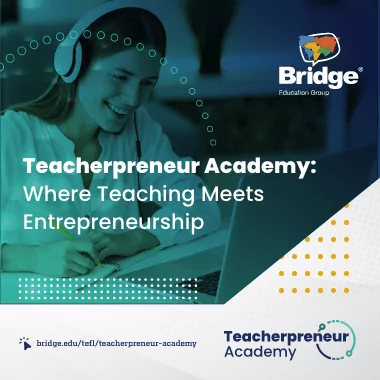
Explore Topics
- Global Elt News
- Job Resources
- Industry Insights
- Teaching English Online
- Classroom Games / Activities
- Teaching English Abroad
- Professional Development

Popular Articles
- 5 Popular ESL Teaching Methods Every Teacher Should Know
- 10 Fun Ways to Use Realia in Your ESL Classroom
- How to Teach ESL Vocabulary: Top Methods for Introducing New Words
- Advice From an Expert: TEFL Interview Questions & How to Answer Them
- What Is TESOL? What Is TEFL? Which Certificate Is Better – TEFL or TESOL?

Johanna Kawasaki
- August 7, 2023
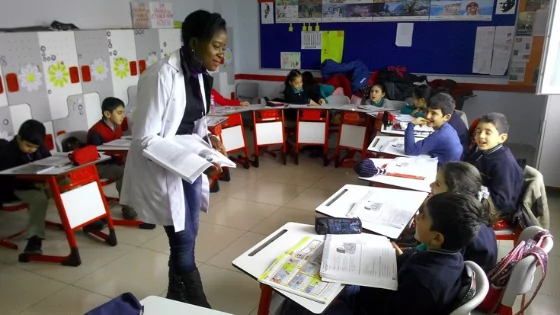
There’s no single way to teach English and, in fact, there have been many popular approaches over the years. These are a few of the top ESL teaching methods, including communicative language teaching (CLT) and total physical response (TPR), used in the classroom today. Learn more about these and other methods and how you can apply them to a real-life classroom in Bridge’s Professional Certificate courses .
Whether you’re new to the different teaching methods or you need a refresher, download this guide to popular ESL methodologies to brush up on the definition and applications of the latest approaches developed by industry experts.
Why learn ESL teaching methods?
There are many reasons why learning a few basic ESL teaching methods is a must for ESL teachers. Here are some ways that learning the most popular methods of teaching ESL can help you as an English teacher:
- Demonstrating knowledge of these ESL teaching methods and strategies makes you more marketable.
- Using TEFL/TESOL buzzwords during an interview can improve your chances of getting hired.
- Using a variety of methods in the ESL classroom makes you a more effective and engaging teacher.
- Understanding pedagogy helps you design better ESL materials and lessons.
- Learning methodology can help you strategically use learning objectives that will benefit your students.
If you’re new to teaching, you’ll want to get initial training and qualification with a TEFL certificate . You can explore our online TEFL courses to get started!
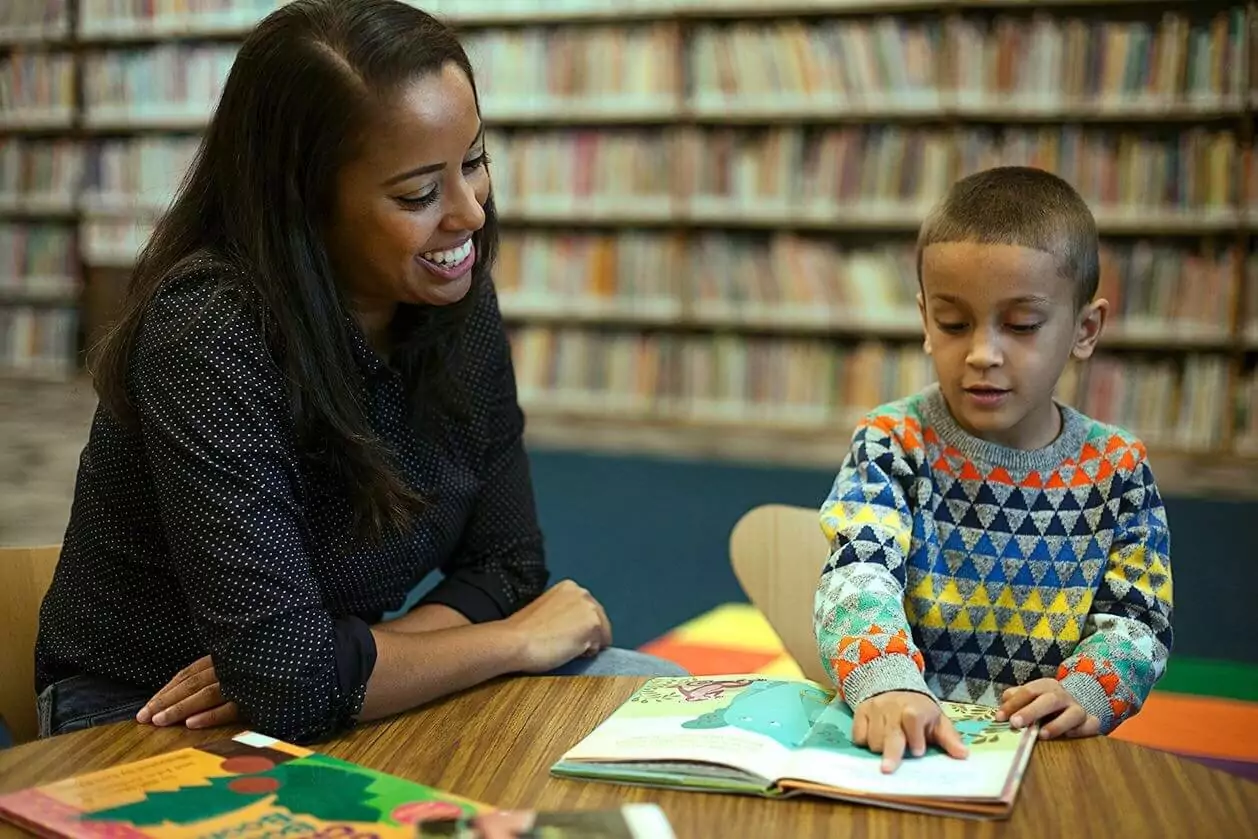
What are some popular ESL teaching methods?
Method #1: direct method.
For the direct method, all teaching is done in the target language. Translations are not allowed in class, and the focus lies heavily on speaking instead of grammar. As a result, the direct method is a very student-centered strategy that has gained popularity in recent years.
Students are supposed to learn the target language naturally and instinctively, which is why the direct method is also called the “natural approach.” Mistakes are corrected as they happen in class, and teachers reinforce the correct usage of the language with praise. This method is frequently used when teaching English online . Many virtual ESL companies require teachers to only speak English during class to encourage an immersive experience.
Get more ideas for correcting students’ mistakes by taking Bridge’s 20-hour Micro-credential course: Error Correction in the EFL Classroom .
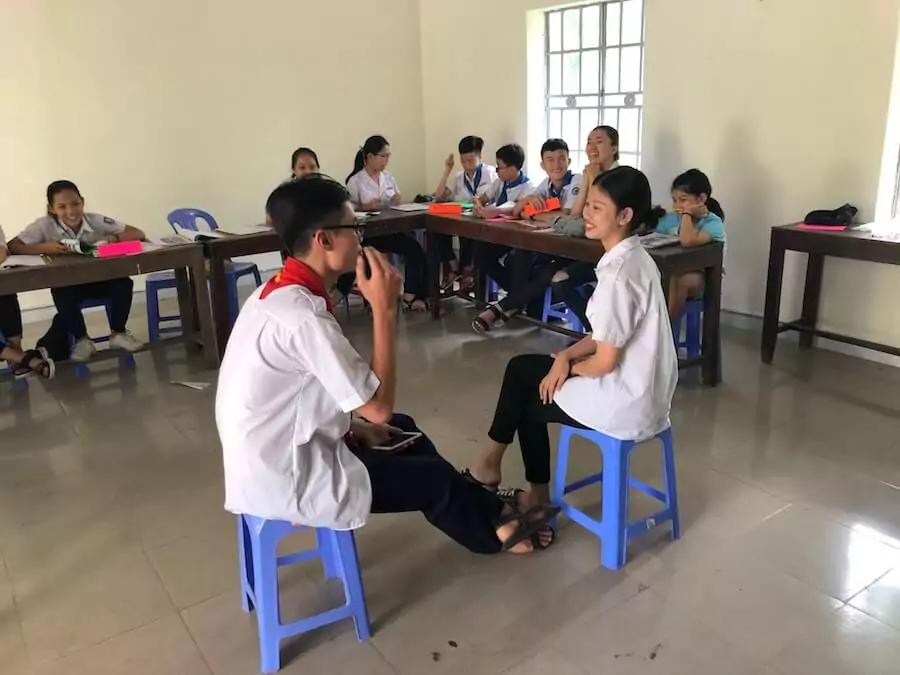
Method #2: Communicative language teaching (CLT)
Communicative language teaching is perhaps the most popular approach among the methods of teaching ESL today. CLT emphasizes the student’s ability to communicate in real-life contexts. As a result, students learn to make requests, accept offers, explain things, and express their feelings and preferences.
Additionally, since CLT focuses on teaching language through real-world assignments and problem-solving, it’s less concerned with grammar accuracy and instead focuses on fluency.
Promote communication and fluency in your classroom with these ESL speaking activities.
Method #3: Task-/project-/inquiry-based learning
This teaching strategy for ESL students can sometimes be considered a part of CLT, but it heavily emphasizes the students’ independence and individuality. Inquiry-based learning is a modern approach that is becoming widely popular in schools all over the world. By asking questions and solving problems, with the teacher as a mere learning facilitator, student motivation and participation in tasks and projects are thought to increase.
Find out more about task-based learning.
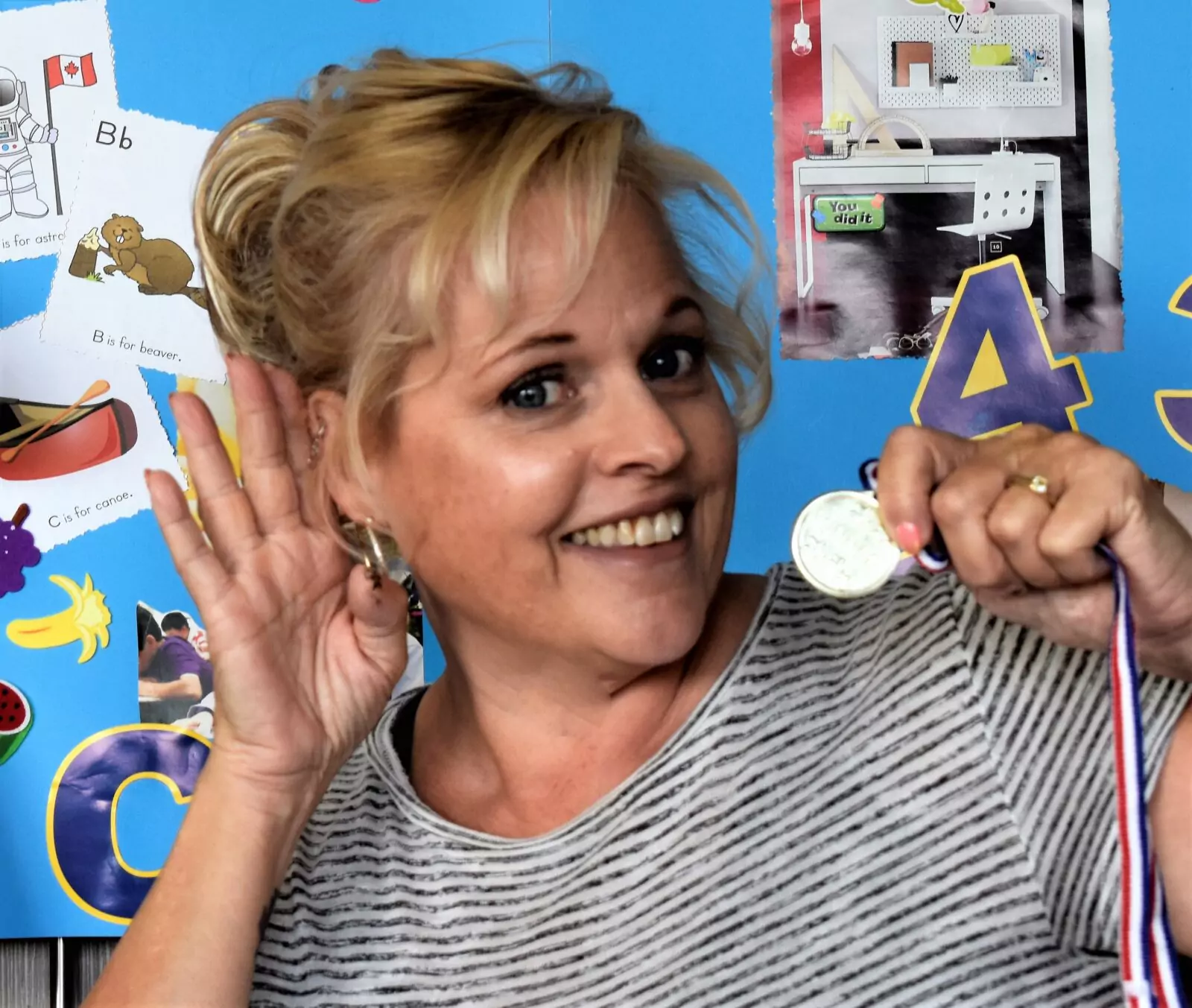
Method #4: Total physical response (TPR)
Next is the Total Physical Response (TPR) method. You may have heard of this teaching strategy for ESL before, but what exactly is TPR ? Total Physical Response has become a very popular approach in which students react to the teacher with movement. Some examples include miming, gesturing, or acting out the language.
For example, the teacher and students might make an exaggerated frown and pretend to cry when learning the word “sad.” TPR suggests that students learn the target language best through physical response rather than by analysis.
Additionally, TPR is often used when teaching English online and when teaching young learners, as it not only helps students remember vocabulary but also provides an outlet for their energy and helps them stay focused when sitting for long periods.
If you like TPR, you might also like using drama as an ESL teaching method.
Method #5: An eclectic approach
Many teachers choose from the collection of humanistic approaches (TPR, for example) and communicative approaches (the direct method and CLT). Often, they incorporate bits and pieces of many other teaching strategies for ESL learners and use what works best for their individual students. Generally speaking, there is no one-size-fits-all methodology. Each group of learners will have varying learning styles and preferences. For that reason, conducting a needs assessment is a great starting place for teachers who aren’t sure which methodology, or methodologies, to apply.
For example, a teacher who uses mostly the direct method may occasionally do a lot of grammar explanation when preparing students for English proficiency exams , such as teaching Pearson Test of English (PTE) test prep , or a CLT advocate may borrow some aspects of the direct method or use TPR.
- Pro Tip: Another great way to combine or develop teaching methods is to frequently reflect on your teaching style by using a journal where you write down comments, note adjustments, and brainstorm how you can change certain methods or procedures if necessary.
The list of ESL teaching styles doesn’t have to end here! You can find your own favorite TEFL/TESOL method from among those listed above, combine several strategies for teaching your ESL students, or develop your own ESL teaching methods and techniques. For a full breakdown of the different methodologies and how to evaluate your students’ needs, download Bridge’s ESL Methodologies Guide .
Delve deeper into these and other ESL teaching methods and techniques with Bridge Professional TEFL/TESOL Certificate courses.
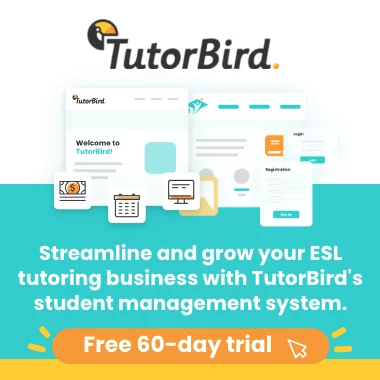
After backpacking Australia on a Working Holiday visa, Bridge graduate Johanna traveled to Japan for a year to teach English. She then moved to New Zealand for another two years before returning to her chosen home country, Japan, where she currently lives. Now, with more than eight years of professional English teaching experience, Johanna enjoys her expat life in Japan teaching teenagers at a private junior and senior high school, where she recently received tenure after only two years. When she’s not teaching, Johanna continues to travel regionally and explore new places.
the complete Guide for the different eSL teaching methods
Beginning Steps for the eSL Teaching Methods
Table of Contents
a. What is ESL education?
ESL, short for English as a Second Language, is simply the instruction and study of English by speakers of other languages. It’s aimed at teaching English skills to individuals who speak a different native language. ESL education is extremely beneficial for people wanting to improve their English skills – for school, work promotion or simply for social purposes.
b. Why are ESL teaching methods important?
Effective ways to teach ESL play a key role in aiding students to reach their language learning goals. They make sure students not only understand the basic parts of English such as grammar and vocabulary but also build solid communication skills. A well-planned ESL program gives students the vital tools to communicate confidently in an environment where English is predominantly spoken.
Moreover, successful ESL teaching methods stimulate student involvement, interaction and engagement, creating a welcoming and inclusive learning atmosphere. By using a range of teaching strategies like acting out scenarios, group talks, and digital resources, ESL teachers can appeal to the variety of ways students learn and speed up their language learning journey.
In the world of today where English has become the main language for international communication, effective ways to teach ESL are extremely important. They equip individuals with the capability to interact with people from diverse cultures, expand their outlook and grab opportunities that need high proficiency in English.
Old-School Techniques for Teaching Language
A. the grammar-translation technique.
The Grammar-Translation Technique is a time-honored method of teaching English as a Second Language (ESL). This technique puts the spotlight on learning grammar rules and translating them. Students are guided to grasp grammar rules and expand their vocabulary by doing cramming exercises and translating content. The main motive behind this method is to hone reading and writing skills. On the flip side, it doesn’t pay much heed to practicing speaking or listening skills.
This technique calls for dissecting and translating sentences from the language being learned to the native language, and the other way around. This way of teaching is advantageous for learners who want to get the hang of the language’s structure and its complex grammar rules. However, it might be restrictive when it comes to improving verbal communication skills and fluency.
To delve deeper into the Grammar-Translation Technique, check out this Link .
b. The Listen-and-Repeat Technique
The Listen-and-Repeat Technique is yet another time-honored teaching method that emphasizes memorization and repetition. It necessitates listening to and echoing dialogues and sentences to cement language patterns and fine-tune pronunciation. This technique’s aim is to mold accurate and automatic responses via thorough repetition.
Nonetheless, the Listen-and-Repeat Technique also has its downsides when it comes to encouraging communication and fluency. It focuses more on directed practice and might not give enough opportunities for students to express themselves imaginatively or take part in real-life chats.
While the Grammar-Translation Technique and the Listen-and-Repeat Technique have their positive sides, they are often viewed as outdated in the realm of ESL teaching methods. Contemporary approaches to language instruction prioritize communicative competence and offer a more comprehensive and interactive learning experience to students.
Teaching Language Through Communication (TLC)
A. understanding and summarizing tlc.
Teaching Language Through Communication (TLC) is a method used in teaching English as a Second Language (ESL) that stresses the value of communication and meaningful interactions in learning a language. The TLC approach believes that language is a tool for communication and its main aim is to enhance students’ capability to use language in everyday situations. Rather than just focusing on grammatical correctness, TLC stresses the practical usage of language skills.
b. Highlighting Communication and Fluency
The prime objective of TLC is to equip students with the ability to communicate effectively and smoothly in the language being learned. It motivates students to take part in genuine and purposeful communication, both in verbal and written forms. By facilitating plenty of opportunities for students to hone their language skills through discussions, role-plays, and scenarios based on real-life, TLC promotes the development of fluency.
c. Implementing Real-life Materials and Situations
TLC utilizes genuine materials like newspapers, videotapes, and audio recordings to give students a taste of practical language usage. Through these materials, students get familiar with various registers, accents, and cultural subtleties. Furthermore, TLC promotes the incorporation of real-life tasks and situations that aligns with the language needs and interests of the students.
d. The Teacher’s Role as a Guide
In TLC methodology, the teacher plays the part of a guide rather than just being a regular dispenser of knowledge. The teacher’s job is to foster a conducive learning atmosphere and steer students in their quest for mastering the language. The teacher ensures meaningful communication opportunities, keeps an eye on language usage, provides feedback, and steers language learning through engaging tasks and activities.
e. Emphasizing Student-led Activities
TLC insists on a strong emphasis on activities that are student-led, wherein learners take an active part and are in control of their learning process. These activities promote teamwork, critical thinking, and problem-solving skills. Students participate in pair and group work, enabling them to practice their language skills in an authentic and interactive manner. This student-led approach encourages self-reliance and motivation among learners, which leads to more effective language learning.
TLC has become a favored approach in ESL teaching due to its concentration on practical communication, active student participation, and the promotion of fluency. By using this approach in language classrooms, teachers can provide a dynamic and substantial learning experience for their students.
Learning through Practical Tasks (LPT)
A. understanding the lpt method.
Learning through Practical Tasks (LPT) is a method used in teaching English as a second language (ESL). It places major emphasis on practical tasks as the foundation of language learning. Instead of just concentrating on grammatical rules and structures, the LPT approach promotes the application of language in real-world tasks. These tasks could be anything from arranging a trip, delivering a speech, to solving a real-world problem, mirroring the language requirements and aims of the learners.
b. Concentrating on real-world tasks and problem-solving
The goal of the LPT method is to make the connection between learning a new language and using that language in real-life situations. It achieves this by incorporating genuine tasks and problem-solving activities into the learning process. Learners are involved in activities that require them to use the language in a meaningful way to achieve a specific goal or resolve a problem. This approach ensures that language learning is purposeful and relevant to learners’ lives, enhancing their interest and involvement.
c. Combining different language skills
An integral aspect of the LPT method is the convergence of various language skills. While working on tasks, learners naturally employ a range of language skills, such as listening, speaking, reading, and writing, in a comprehensive manner. By merging these skills, learners are exposed to the interconnectedness of language and develop a full understanding of how different aspects of language function in unison.
d. Encouraging self-reliance and teamwork
The LPT method supports self-reliance and teamwork among learners. It gives learners the flexibility to make choices, establish objectives, and plan their strategy to accomplish the tasks. This freedom nurtures a sense of ownership and responsibility in their learning process. Additionally, the LPT method urges teamwork among learners, as they collaborate to execute tasks, exchange ideas, and give feedback to each other. This teamwork enhances language practice and offers chances for learners to learn from their peers.
With the application of the LPT method in ESL classrooms, teachers can establish a genuine and learner-focused environment that promotes using the language in meaningful situations. Learners not only develop their language skills but also problem-solving capabilities, critical thinking skills, and communication strategies that can be applied to real-world situations.
Learning through Content and Language Integrated Learning (CLIL)
A. understanding clil and its advantages.
Content and Language Integrated Learning, or CLIL, is a teaching method that combines language instruction with the study of a particular topic. In a CLIL classroom, students study both the language and the topic concurrently, which aids them in becoming adept at the language while becoming knowledgeable about a specific subject. The rewards of this approach are substantial. On the one hand, it advances language abilities by offering students real-life and significant contexts to use the language. On the other hand, it encourages a deep understanding of the subject, as students delve into the subject matter in an environment rich in language.
b. Joining of subject learning and language instruction
CLIL unites language teaching with the investigation of particular subject content. As students employ the language they’re learning to understand and converse about the subject matter, they’re advancing their language abilities and enhancing their knowledge of the topic concurrently. This merging helps students see the real-world relevance and importance of learning a language, as they apply their language skills to understand and talk about various subjects.
c. The role of context and significant learning experiences
CLIL places a strong emphasis on providing learning experiences that are both contextually relevant and meaningful. By linking language instruction with subject matter, students participate in genuine and goal-oriented tasks that mirror real-life language use. This approach offers a more profound understanding of both the language and the topic, as students delve into subjects in a manner that is meaningful and relevant. Learning in a contextualised environment enhances comprehension, memory, and application of both knowledge and language skills.
d. Utilizing a range of resources and multimedia
CLIL encourages the use of a wide array of resources and multimedia to aid in the learning of both language and content. Educators can employ textbooks, articles, videos, online resources, and multimedia platforms to offer students a variety of materials to explore and interact with. These resources introduce students to different types of language use, authentic materials, and a range of perspectives, which enhances their language skills and understanding of the content.
By incorporating CLIL into the teaching of English as a Second Language (ESL), educators offer students a comprehensive and integrated learning experience. Students not only improve their language skills and knowledge about a specific subject but also enhance their critical thinking abilities and cross-cultural understanding. CLIL prepares students for real-world language use and equips them with the necessary skills to navigate through academic and professional situations effectively.
Wrapping Up
A. a brief summary of old-fashioned teaching techniques.
Throughout this article, we’ve delved into well-known ESL teaching practices such as the Grammar-Translation Tactic and the Audio-Lingual Strategy. While these strategies hold certain benefits, they usually give higher importance to grammar laws, translation, and reiteration instead of useful interaction and smooth fluency.
b. Highlighting the Benefits and Success of CLT, TBLT, and CLIL
Later, we began to examine more recent ESL teaching methods approaches, encompassing Communicative Language Teaching (CLT), Task-Based Language Teaching (TBLT), and Content and Language Integrated Learning (CLIL). These strategies give importance to conversation, real-world tasks, and the amalgamation of language skills with content knowledge. CLT emphasizes practical communication and fluency, TBLT stresses on problem-solving and genuine tasks, and CLIL brings together language learning with the study of content.
c. A Call to Use These Tactics in ESL Teaching
In order to make language learning more engaging and effective, ESL educators need to integrate these current teaching methods into their classrooms. The implementation of CLT, TBLT, and CLIL can foster a motivational learning environment that enhances language learning, critical thinking, teamwork, and the application of language in real-life scenarios. These methods equip learners with the necessary skills to efficiently communicate in English and attain their language-learning objectives.
If you are studying for the Duolingo language test. Please check out the following Link .
d. Emphasizing the Need to Tailor Teaching Methods to Fit Individual Students
Importantly, it must be understood that every learner is distinctive and might react differently to assorted teaching methods. As ESL educators, adjusting our teaching methods to align with the unique requirements, interests, and learning styles of our students is crucial. By integrating a wide range of methods and strategies, we can construct a vibrant and inclusive learning environment that accommodates diverse learner needs.
In summation, ESL teaching methods has undergone significant developments, transitioning from old-fashioned teaching methods to more communicative, task-oriented, and content-integrated approaches. By adopting these innovative methods and customizing them to individual learners, ESL teachers can help students metamorphose into confident and adept English speakers in real-life situations.
Leave a Comment Cancel Reply
Your email address will not be published.
Save my name, email, and website in this browser for the next time I comment.
Terms and Conditions - Privacy Policy

IMAGES
VIDEO
COMMENTS
To find out more, read about our top 6 most effective learning methods below. 1. Online learning. Teaching online may not have been the norm for most teachers before the COVID-19 pandemic, but there have always been some teachers who prefer to work online. Online tutors often enjoy the freedom of working from home, choosing their working hours ...
6. Inquiry-based learning. Inquiry-based learning promotes the idea of learning by investigation, where students can complete projects, ask questions and find answers by themselves. While teachers act as resources in these times, the goal is for students to solve problems and discover information on their own.
Good teaching isn't about following a "rigid list of the most popular evidence-based tools and strategies," veteran high school English teacher Renee Moore tells Kristina Rizga for The Atlantic's On Teaching series. The most effective teaching tools, Moore suggests, are intangible qualities that directly address the fundamental human needs of a diverse classroom community—traits like ...
Quick Answer: Your teaching methodology refers to the strategies and techniques you use to deliver instruction and facilitate learning in the classroom. It encompasses your approach to lesson planning, classroom management, assessment, and student engagement. The most effective teaching methodologies are those that are student-centered, promote critical thinking, and cater to diverse learning ...
Teaching Methods. Teaching methods, or methodology, is a narrower topic because it's founded in theories and educational psychology. If you have a degree in teaching, you most likely have heard of names like Skinner, Vygotsky, Gardner, Piaget, and Bloom.If their names don't ring a bell, you should definitely recognize their theories that have become teaching methods.
Teaching isn't just a profession; it is a service to the country. With the changing times, it is paramount to adopt a new teaching methodology that will provide good results and will help students to learn and grow. There are countless teaching methods and techniques.
Watch on. Effective teaching methods are strategies and techniques used by educators to engage students, promote learning, and create a positive classroom environment. These methods include online learning, experiential learning, differentiation, blended learning, game-based learning, and student-centered learning.
The right teaching method can make all the difference in student success. Effective teaching methods ensure that information is being delivered in a way that's engaging and meaningful. Not all students learn the same way, and using a variety of teaching methods can help ensure that every student is able to understand and retain information.
His findings linked student outcomes to several highly effective classroom practices. Here I'd like to highlight five of those practices: 1. Teacher Clarity. When a teacher begins a new unit of study or project with students, she clarifies the purpose and learning goals, and provides explicit criteria on how students can be successful.
Research. Research on teaching and learning demonstrates that clear course structure and teaching clarity increases student motivation, persistence, and improves performance and grades, with particular impact on first-generation and low-SES students (Blaich & Wise, 2014; Pascarella & Blaich, 2013; Wang et al., 2015). 1 Clear and organized instruction impacts academic performance through three ...
6. Deliberate practice. One of the most effective ways of introducing new concepts to a class, Deliberate Practice involves breaking learning down into a series of sub skills, each of which is deliberately practiced in turn. The 5 steps involved in deliberate practice are: Isolate the skill. Develop the skill.
Difference Between Teaching Methods and Teaching Strategies: Teaching Methods: The actual techniques used, like group discussions or lectures. Teaching Strategies: The overarching plans or approaches guiding how content is taught. Related Reading: Best Teaching Strategies 3 Importance of Teaching Methods. The right types of teaching methods are ...
The collaborative testing method helps students experience a sensitivity for diversity and others' point of view; develop and refine skills in persuasion, listening, and reading; and share responsibility and accountability. ... Arthur W. and Gamson, Zelda F. (1987). Seven Principles for Good Teaching in Undergraduate Education. AAHE Bulletin 39 ...
The Hybrid, or blended style. Hybrid, or blended style, follows an integrated approach to teaching that blends the teacher's personality and interests with students' needs and curriculum-appropriate methods. Pros: Inclusive! And it enables teachers to tailor their styles to student needs and appropriate subject matter.
Teaching Methods: Not as Simple as ABC. The teacher-centered approach vs. the student-centered approach. High-tech vs. low-tech approaches to learning. Flipped classrooms, differentiated instruction, inquiry-based learning, personalized learning and more. Not only are there dozens of teaching methods to explore, it is also important to have a ...
10 effective teaching practices you can use right now. 1. Model as you teach. When presenting a new subject to your class, it helps to include a demonstration. While some students will be able to grasp a new concept by hearing the information alone, others — particularly visual learners — will need to see it.
A teaching method is a set of principles and methods used by teachers to enable student learning.These strategies are determined partly on subject matter to be taught, partly by the relative expertise of the learners, and partly by constraints caused by the learning environment. For a particular teaching method to be appropriate and efficient it has take into account the learner, the nature of ...
New teaching methods and barriers to the use of these methods. Teachers participating in this study believed that teaching and learning in higher education is a shared process, with responsibilities on both student and teacher to contribute to their success. ... In the present study, it was illustrated that a good teaching method helps the ...
Since our interest is the claims made in each article about the teaching method under study, the analysis concerned the abstract, results, discussion, conclusion, and implication parts of each review. Three main issues, cutting across the reviews over time, were identified: 1) the abundance of moderating factors, 2) the need for highly ...
Consider which learning intentions are the most essential for future learning, as this will help you to prioritise with confidence when structuring lessons. Take a look at The Anglo School in Uruguay applying this thinking when adapting plans. Skill 1: Planning. Adapting Medium and Long Term Plans. Level 2. | Cambridge Teaching Skills Roadmap.
9 Types of Teaching Methods. 1. Lecture Mode. Lecture learning is one of the most common methods for teaching and learning in higher institutions of seminar. This method involves a teacher standing in front of students and talking about course content they need to know or understand.
Method #2: Communicative language teaching (CLT) Communicative language teaching is perhaps the most popular approach among the methods of teaching ESL today. CLT emphasizes the student's ability to communicate in real-life contexts. As a result, students learn to make requests, accept offers, explain things, and express their feelings and ...
The Grammar-Translation Technique is a time-honored method of teaching English as a Second Language (ESL). This technique puts the spotlight on learning grammar rules and translating them. Students are guided to grasp grammar rules and expand their vocabulary by doing cramming exercises and translating content.